#Journey to the West (Mainland)
Text
Monkey King Monkey King (2000) 齊天大聖孫悟空


Director: Zheng Shaofeng
Screenwriter: Huang Meijin
Starring: Zuo Xiaohu / Lin Kaiwen / Zhu Guohong / Shi Feng / Wan Yinpeng / Xu Huihui / Mai Maijia / Gao Ming / Liu Ding / Hong Hui / Shao Jin
Genre: Comedy / Fantasy / Adventure
Country/Region of Production: Taiwan, China
Language: Hokkien / Mandarin Chinese / English
Number of Seasons: 1
Number of episodes: 20
Also known as: Journey to the West (Mainland) / 大话西游(陆)
Type: Retelling
Summary:
The Taiwanese version of "Journey to the West" was produced by Taiwan Television in 2000, starring Zuo Xiaohu, Lin Qiwen, and Zhu Guohong. The title of the drama is "Monkey King, Monkey King". When it was broadcast in mainland China, it was also called "Journey to the West". The main plot is still based on the four masters and disciples of Tang Monk and their disciples going to the West to learn Buddhist scriptures, but the plot details have been "slightly" changed.
Source: https://movie.douban.com/subject/30168046/
Link: https://www.youtube.com/watch?v=u8jhcLXmiRM&list=PLtww_vcpAB8pz5kBf0EGlwfukh0K2skzn&index=21&ab_channel=TTV%E5%8F%B0%E8%A6%96%E5%AE%98%E6%96%B9%E9%A0%BB%E9%81%93TTVOfficialChannel
#Monkey King Monkey King#齊天大聖孫悟空#Journey to the West (Mainland)#大话西游(陆)#jttw media#jttw television#television#live action#retelling#sun wukong#zhu bajie#sha wujing#tang sanzang#monk tripitaka#demon bull king#princes iron fan#rewrite
11 notes
·
View notes
Text
HOLY SHIT pilgrims I’m about to post divine jttw/LL news from dorkshadows from the beyond the ether -- soon when I have time to blog extensively about it -- but for now HOLY SHIT it’s POST Sanseng Mu smackdown at Mount Hua Erlang Shen, but it gives a different take on immortality and where these characters are in life, so Yang Jian is still YOUNG when he fucks up Sanseng Mu, he’s immortal 25 and his nephew Chen Xiang is immortal 14, and they have to get along or else----
#journey to the west#lotus lantern#erlang shen#the mainland movie industry is finally catching up --#to My Fanfiction From 2018#Lotus Lantern -- but told from a different angle
4 notes
·
View notes
Text
Beleriand is gone and Tol Himling remains. No one lives there, few dare to venture close. Even years later, the fortress feels like bitter grief and pained endurance.
The remaining Noldor– and there aren't many of them by the Second Age– start sailing there. It's not far from the shore; an easy enough journey, even for someone with little seafaring experience.
One day, someone– no one is sure who– takes one of the broken pieces of Himling's walls, carves Maedhros's name into it, and sets it as a tombstone. After that, more graves appear, slowly at first, then more quickly. Old battle-songs and tributes to the dead are carved and painted into the walls. Soon, the meadow around the old fortress is full of memorials, some made from the ruins, others lovingly crafted and brought from the mainland. For all the Noldor fought amongst themselves in the First Age, now their headstoens stand together. In the cemetery, the House of Finwe is united in death as it never was in life. Graves for Feanor and Fingolfin sit side-by-side in a sorrowful peace neither lived to see.
Himring stood on an icy mountaintop where the snow never melted, but Tol Himling does not. One spring the barren meadow blooms, red poppies and blue forget-me-nots. It flowers every year after, new hues and blossoms appearing annurally until the graves are surrounded by a colorful sea of flowers.
Not many Noldor choose to sail west– most that go back to Valinor go in death– but those that do leave tokens on Himling before they leave, broken weapons and battered armor. Maybe they do it to leave something with the dead who may never return from Mandos. Maybe they do it because like the dead, their fight in Middle-Earth has ended.
Men who sail by the island– always by, never to– are very sure that there are ghosts there. To them, the place seems strange and misted, and every figure there looks like a shade. They speak of a golden-haired warrior who spends hours talking to some of the graves, a king who dutifully cares for the tombstones, wiping away dust and moss, the strange dark-haired figure who comes every year to sow wildflower seeds. But those aren't the spirits of the Noldor dead. Only those who would remember them.
#silmarillion#tol himling#himring#noldor#silm headcanons#maedhros#(implied)#elrond#elrond peredhel#galadriel#gil galad#silm meta#elvish mourning rites#I have a lot of feelings about Himling#It's still there#It's still there after everything#And so are the Noldor
454 notes
·
View notes
Text
The real life inspirations behind new characters in Touhou 19 (Unfinished Dream of All Living Ghost)
While I haven’t been posting much about Touhou as of late, I felt obliged to put together the customary post about the inspirations behind the new characters. The new game genuinely renewed my interest. In contrast with similar write-ups pertaining to previous games the research is not entirely mine - some of the sections are a result of cooperation between me and @just9art.
Without further ado, let’s delve into the secrets of the new cast. Find out if Biten is the first “Wukong impersonator” ever, when a tanuki is actually a badger, and why Hisami both is and isn’t an oni. Naturally, the post is full of spoilers. Also, fair warning, it's long.
1. Biten Son - sarugami + Sun Wukong

Sarugami means “monkey kami”, the monkey in mention being the Japanese macaque.To my best knowledge, the term is actually not used commonly in English - the results on jstor and De Gruyter are in the low single digits, Brill outright has nothing to offer. Translations are much more common.

Sarugami are particularly strongly associated with Mount Hiei. You might have heard of it because of its association with Matarajin, though in this case he’s not exactly relevant. Instead, it is believed the monkeys act as messengers of Sanno (the “mountain king”), Sekizan Myojin and Juzenji. Sanno himself could take the form of a monkey according to medieval texts, while Juzenji can be accompanied by a deity depicted as a man with a monkey’s head, Daigyoji, known from the Hie mandala. Sarutahiko is also associated with monkeys based on the similarity between his name and the word saru.
Bernard Faure notes that despite the clearly positive portrayal of monkeys as semi-divine beings in service of these deities, their perception in folklore and mythology can nonetheless be considered ambivalent, because they could be viewed as aggressive. There are even examples of sarugami being portrayed as monstrous antagonists to be defeated by a hero. The best known tale of this variety is known simply as Sarugami taiji. It is preserved in the Konjaku monogatari. Here the sarugami is a fearsome monster who terrorizes a village and demands the offering of one young woman each year.
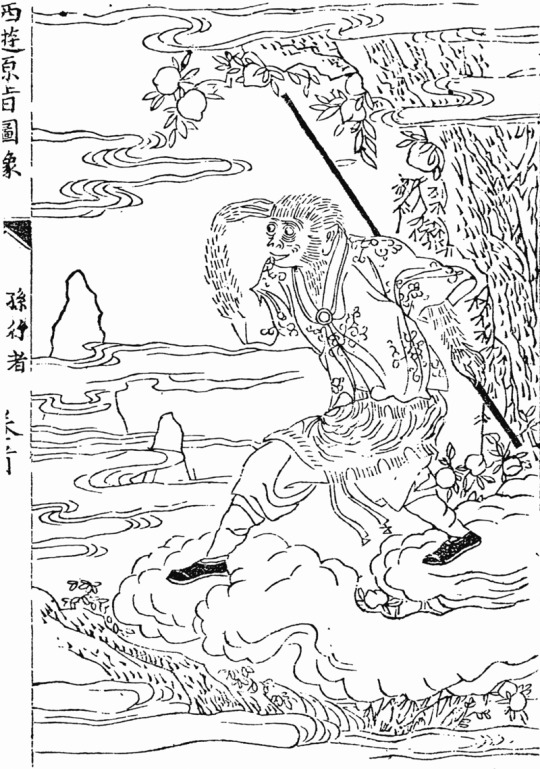
In contrast with the sarugami, I do not think Sun Wukong, one of the protagonists of the classic Chinese novel Journey to the West, needs much of an introduction. We reached the point where even in the west he is recognizable enough to warrant toys based on him (there’s a Lego Wukong on my desk right now). Biten's design has many callbacks to traditional portrayals of Wukong, including the staff (which in the novel is a pillar stolen from the undersea palace of a dragon emperor) and a very distinctive diadem (in the novel making it possible to pressure the unruly Wukong into obeying the monk he is meant to protect).
As a curiosity it’s worth noting that “fake Wukong” is not a brand new idea - in the novel itself, one of the enemies of the heroes, Six-Eared Macaque, actually impersonates him for a time.
Wukong is effectively himself a “divine monkey”, seeing as despite his origin as a literary character he actually came to be worshiped as a deity in mainland China, Taiwan and various areas with a large Chinese diaspora. The topic of Wukong worship itself came to be an inspiration for literature, starting with the excellent The Great Sage, Heaven’s Equal by Pu Songling, a writer active during the reign of the Qing dynasty, in the early eighteenth century.
2. Enoko Mitsugashira - “immortal yamainu” + Cerberus
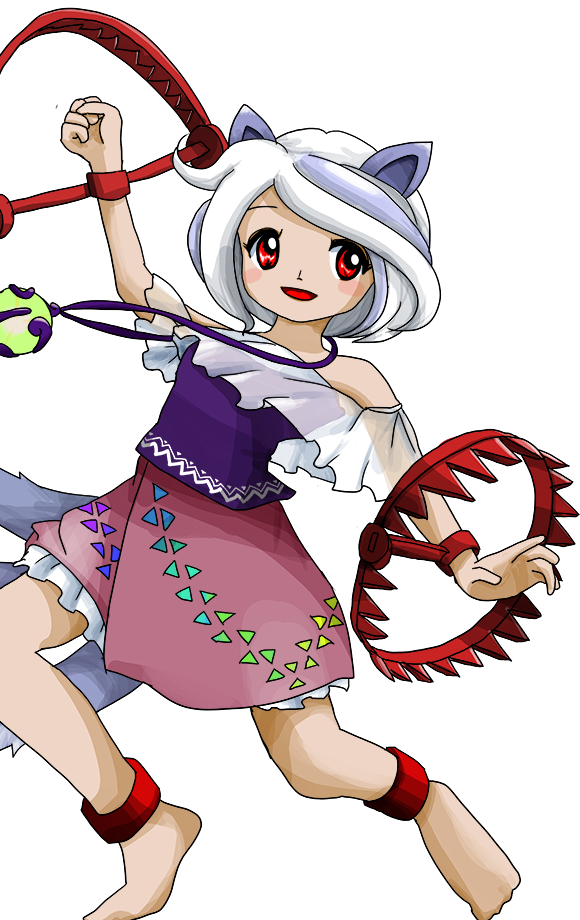
Enoko gets the least coverage here, because there really isn’t much to say. Yamainu, “mountain dog”, isn’t really a supernatural creature, it’s an old term for either the extinct Japanese wolf, a type of feral dog, or a hybrid between these. It can also be used as a synonym of okuri-inu, a youkai wolf believed to accompany travelers at night.

There’s actually a distinctly Journey to the West-esque component to Enoko’s backstory, but I have no clue if this is intentional. In the aforementioned novel, many of the antagonists, who are generally demonic animals, are motivated by the desire to devour the flesh of the protagonist, the Buddhist monk Tang Sanzang, because it is said to grant immortality. Granted, given the obscurity of the figure Zanmu is based on - more on that later - perhaps this is an allusion to something else we have yet to uncover.
Cerberus, being probably one of the most famous mythical monsters in the world, does not really need to be discussed here. The illustration is included mostly because I like Edmund Dulac and any opportunity is suitable for sharing his illustrations. I do not think it needs to be pointed out that Enoko's bear trap weapons are meant to evoke Cerberus' extra heads.
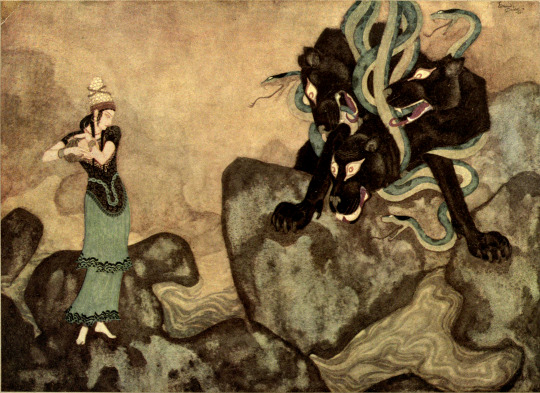
3. Chiyari Tenkajin - tenkaijin (+ mujina) + chupacabra

While my favorite animal youkai not yet featured in Touhou is easily the kawauso (otter), I was very pleased to learn we sort of got a mujina since I wanted to cover this topic since forever, but never got much of a chance. Technically Chiyari is actually meant to be a tenkaijin, which is not a mujina but a slightly different youkai (a will-o-wisp or St. Elmo’s fire-like creature, specifically) who in the single tale dealing with it takes the form of a mujina after dying, but as there is not much to say about it beyond that you will get a crash course in mujina folklore instead.

Today the word mujina is pretty firmly a synonym of anaguma - in other words, the Japanese badger. The animal does not substantially differ from other badgers, so I do not think much needs to be said about its ecology. However, historically the term could be used to refer to the tanuki regionally, or interchangeably to both animals, so in some cases if insufficient detail is provided it is hard to tell which one is meant.
This ambiguity extends to the folklore surrounding them, and generally if you know what to expect from tanuki tales, which I’m sure most people reading this do, you will instantly recognize many of the plot elements typical for mujina ones. In other words, it is yet another yokai which typically takes the role of a shapeshifting trickster. Some supernatural phenomena could be basically interchangeably attributed to mujina, tanuki, kitsune or kawauso. Mujina are commonly described taking the form of Buddhist monks, which is one of the many similarities between them and tanuki.

The most famous depiction of a shapeshifting mujina comes from Toriyama Sekien’s Konjaku Gazu Zoku Hyakki (The Illustrated One Hundred Demons from the Present and the Past). The accompanying text compares the creature to the supernatural versions of kitsune and tanuki, and states that the artist relied on a tale according to which a mujina was able to successfully impersonate a Buddhist monk until accidentally revealing its tail.
What makes the mujina special is that it is actually the oldest recorded example of a youkai of this sort. A mujina tale already appears in the early Japanese chronicle Nihon Shoki, dated to 627. It reports an incident of a mujina transforming into a human and singing somewhere in the Michinoku Province. I feel like this alone is a good example of why you should be wary of people who seek to present Nihon Shoki or Kojiki as historical truth.
Western audiences as far as I know were first introduced to mujina by Lafcadio Hearn. To my best knowledge, the fabulous shapeshifting badgers however failed to gain the popcultural recognition enjoyed by tanuki and kitsune. They did appear in Shigeru Mizuki's stories every now and then, and I found a mascot character based on them, but overall there isn't all that much beyond that.
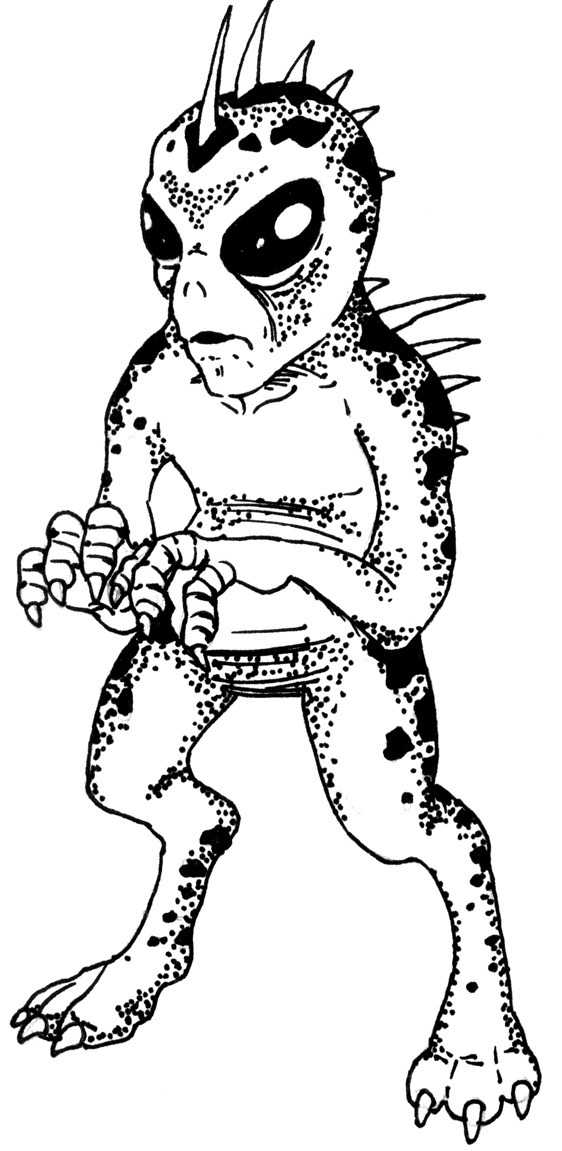
Naturally, there isn't much mujina in Chiyari's design, and she instead most likely owes her distinctly spiky appearance to the other inspiration behind her character, the chupacabra. Mujina are not really portrayed as bloodthirsty, but the poorly documented tenkajin apparently is, which is presumably why ZUN decided to connect Chiyari with the chupacabra, the best known modern blood-drinking creature, who first appeared in tall tales from 1995 and subsequently took popculture by storm after spreading from Puerto Rico to mainland USA and Mexico. I am not a chupacabra aficionado so I have little to offer here, sadly.
4. Hisami Yomotsu - yomotsu-shikome
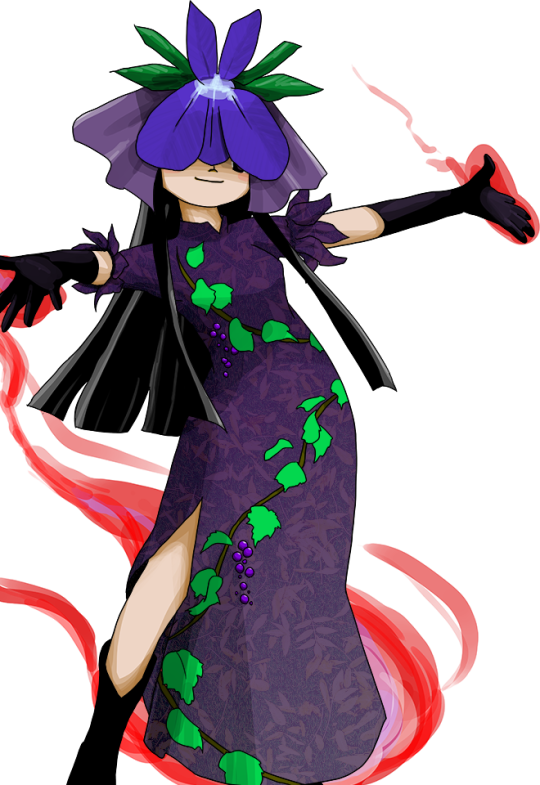
Judging from what I’ve seen on social media and on pixiv, Hisami is shaping up to be one of the most popular new characters (she’s my fave too). In sharp contrast with that, her basis is pretty obscure. So obscure that there isn’t even any historical art to showcase, as far as I can tell (note that this blog claims night parade scrolls might have something to offer, though - I was unable to verify this claim for now, sadly). As we learn from her bio, she is supposed to be a yomotsu-shikome. They’re called the “hags of Yomi” of Yomi in Donald L. Philippi’s Kojiki translation. The term shikome can be literally translated as “ugly woman”. Nothing about them really implies femme fatale leanings we are evidently seeing in Touhou but I’m not going to complain about that.
Yomotsu-shikome appear only in the Kojiki and the Nihon Shoki, and in both of these early chronicles they are portrayed as servants of Izanami after she died and came to reside in Yomi, the land of the dead. Nihon Shoki states there are only eight of them.
The distinct grape vine motif present on Hisami’s clothes seems like an obvious reference to Izanagi’s escape from Yomi following his meeting with Izanami, portrayed in the myth recorded in both of these sources. When the yomotsu-shikome started to pursue him, he threw a vine he used to hold his hair at them. The plant instantly bore fruit, which the entities started to eat. They later resumed the chase, but were once again held back, this time by a bamboo shot. According to the Nihon Shoki, they eventually give up after he creates a river from his piss (sic) to keep them away.

Yomotsu-shikome are sometimes compared to oni by modern researchers. Noriko T. Reider in her monograph about oni argues that alongside hashihime and yamanba (pictured above) they can be effectively grouped with them. Another researcher, Michael D. Foster, is more cautious, and states that despite clear similarities it’s best to avoid conflating oni-like female demons with female oni proper, especially since the latter have a distinct iconography and a distinct set of traits. Norinaga Motoori, the founder of kokugaku or “national learning”, a nationalist intellectual movement in Edo and Meiji period Japan, claimed that oni were based on yomotsu-shikome, which is a pretty dubious claim. It is ultimately not certain when the term oni started to be used, but it is safe to say it has continental origin. And, of course, oni permeate Japanese culture in a way yomotsu-shikome do not.
5. Zanmu Nippaku - Zanmu
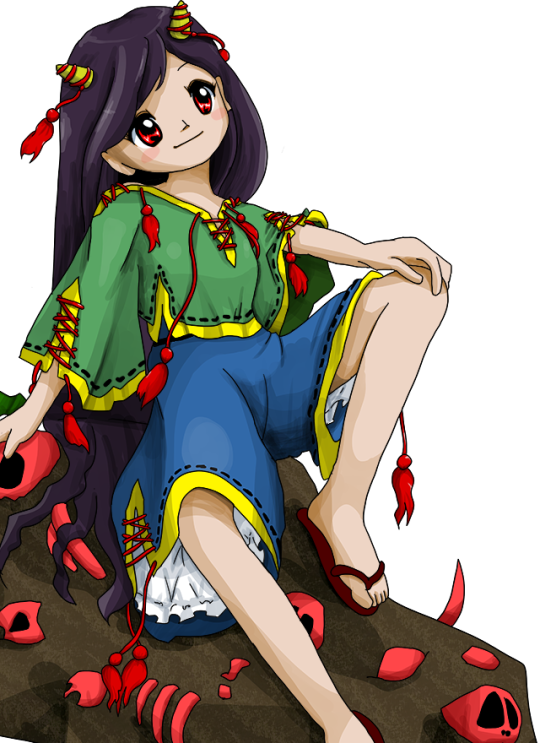
This was the toughest mystery to solve, and I am fully indebted to 9 here, since they figured it out, I am merely depending on what they directed me to. Research is still ongoing, and it feels like we just started to untangle this mystery, so you can safely expect further updates.
Zanmu appears to be based on the Buddhist monk… well, Zanmu. You can learn a bit about him here or on Japanese wikipedia; it seems there are quite literally 0 sources pertaining to him in English, and even in Japanese there is actually very little. Their names are not written the same, ZUN swapped the sign for “dream” from the original name for one which can be read as “nothingness”. If the unsourced quote on wikipedia is genuine, the reason might be tied to the personal views of the irl Zanmu. What little we’ve been able to gather about him is that he was active in the Sengoku period, and apparently was regarded as unorthodox and eccentric. This lines up with Zanmu’s omake bio pretty well. Seems the real Zanmu was also unusually long lived, and was able to recall events from distant past in great detail, though obviously the figure of 139 years attributed to him in a few places online has to be an exaggeration.
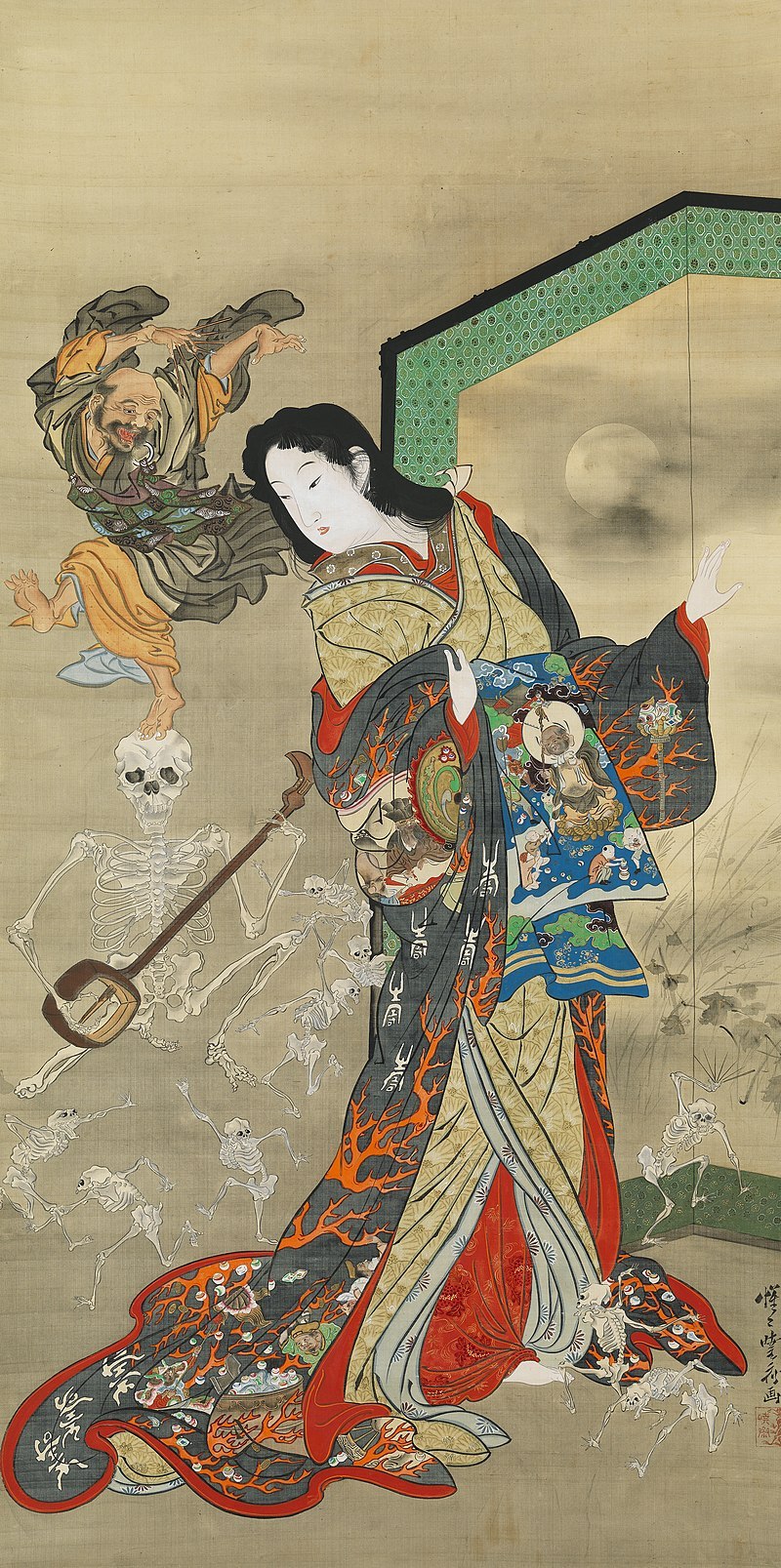
Yet more puzzling is the reference to Zanmu’s familiarity with Ikkyo you might spot in the linked article. Whether the famous Ikkyo who you may know from the tale of Jigoku Dayu is meant is difficult to determine. The chronology does not really add up; on the other hand the logic behind associating one eccentric semi-legendary monk with another in later legends isn’t particularly convoluted. As 9 pointed out to me, if ZUN was aware of this link, and the same Ikkyo really was meant, it is not impossible the connection between Zanmu and Hisami is meant to in some way mirror that between Ikkyo and Jigoku Dayu.
As you can easily notice, it’s pretty clear the historical Zanmu was male. It does not seem his Touhou counterpart is, obviously. I would say we should wait for more info until declaring that we have a second Miko situation on our hands, with a male historical figure directly reimagined as a female character without any indication we are dealing with a relative rather than the real deal. There’s still relatively little info to go by so I would remain cautious (though naturally this is not meant to discourage you from having headcanons).
Neither me nor 9 were able to find any connection between the historical Zanmu and oni… so far, at least. Therefore, what motivated ZUN to make Zanmu an oni remains to be discovered.
As a final curiosity, on a semi-related note it might be worth pointing out that while not as common as their male peers, female oni are not a modern invention, and already appear in setsuwa from the 13th century. A particularly common motif are tales describing a woman turning into oni due to jealousy or anger.
Further reading:
Jason Colavito, The Secret Prehistory of El Chupacabra (2011)
Bernard Faure, Gods of Medieval Japan vol. 1-3 (2015-2022)
Michael Daniel Foster, The Book of Yokai. Mysterious Creatures of Japanese Folklore (2015)
John Knight, Waiting for Wolves in Japan. An Anthropological Study of People-wildlife Relations (2003)
Noriko T. Reider, Japanese Demon Lore (2010)
273 notes
·
View notes
Text
South Grastea, Annotated (and the geography for why the Halidom is a prospective attacker's worst nightmare)
So, even if we got some info on geography for Grastea, keeping track of where exactly everything is can be tricky. Thus, I made a small, crude map to help give an idea of where the 'big' locations are, story-wise! Hopefully it helps any fic-writer out there who might want to have an easy consult for where stuff is.

Thus, Euden's path in the main campaign is as follows, as represented by this even cruder drawing wherein black lines are like ch 1-4, blue 5-9, yellow 10-14, purple 15 (the filled in white circle is 'start' in Sol Alberia, filled-in black circle is 'end' of South Grastea shenanigans at the border:

Some of these are guesses (Chanzelia to Clave Loy'elune and Clave Loy'elune to Murgia Village, ex) but others are evidenced or shown outright, like Euden's path from Sol Alberia to the Mistholt forest.
Still a terrible map, but it does show how Euden was bouncing everywhere. The early chapters do make a lot of sense: he approached the Halidom through its southern forest route, then left to leave through Myriage lake to approach Sol Alberia from the north, then got turned around and fled to Mt. Adolla. Guess Euden was lucky when deciding to then flee to the Halidom instead of running to nearby Leonidas for help, though!
Oh, and I also kinda have figured out the vaugeries of how the Halidom is even approachable, because it was kinda confusing as to how people could access it from the west if it only has that main drawbridge in its near-island position.

Long story short, it is still effectively an island, with the only 'permanent' bridge being the stone bridge from the southeast, but even that has a drawbridge they could pull. However, the Halidom does have a wooden rope bridge that goes to the west.
This can be better seen on my own picture (which also shows how the Halidom on the map would change depending on how far you've developed the Halidom!):

From a near distance, it looks like so:
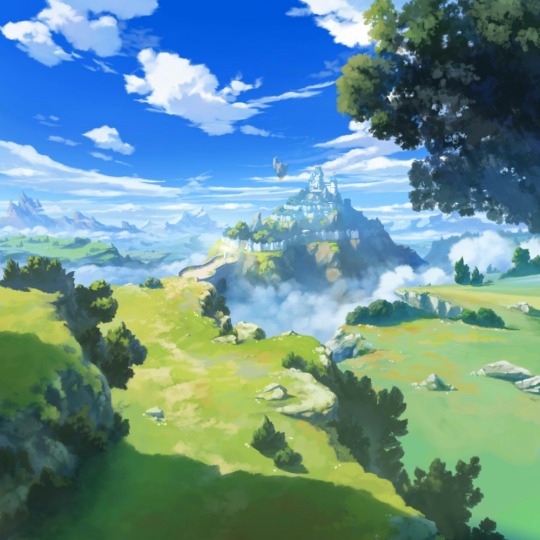
This is where it becomes funny in the Blood That Binds, wherein most the family split up to try and bait the replica Alberius from all sides. Leonidas is to the north, Valyx the south, Chelle to the west, and Emile (and Phares) to the east.
But, as we can see, the only true feasible routes to march any decently-sized force through is the west and the south. Any other route would require a lot of swimming and then mountain-climbing to scale the rocky walls, which is not recommended to keep an energetic and safe force.
Thus, replica Alberius and his brutish strength decides to strike west, north, east, and then south. If I had to guess, Leonidas was put to the north to either be a one-man army himself by being able to fly over the lake separating him from the Halidom, or as a stealth source of reinforcements to either Emile or more likely Chelle to hopefully catch Alberius off-guard.
But Emile? Emile was likely put to the east just to keep him out of the action. And they still didn't trust him to lead that force well enough in case something did happen that they plunked Phares there to babysit!
Interestingly, the Halidom's layout has unique implications for the tunnel system that exists. We know it goes from outside the castle into it (and specifically into Euden's room at one point), but from where does the other side emerge? Is it still on the island, or is it a long long journey to the under the water surrounding the Halidom and under that, followed by a long climb up? We can see some more tunnels in the Halidom map in game, so who knows.

We also see Halidom strategy come into play for Gala Leif's story.

As we can see, it's technically possible to get very creative and 'make a route' from the east, likely in the form of a long bridge to span the gap between the island and the mainland. This, however, is still a very unconventional and dangerous endeavor (defenders just need to break the bridge), characteristic of Harle, and likely not a recommended warfare strategy if one dreams of attacking the Halidom.
Honestly, though, it's a phenomenal position defensively. The biggest risk would be a siege because of the easily cut-off routes in and out, but even that is mitigated by the presence of flying dragons that could carry food as well as its own mini-forest on the island they could cultivate and sustain a small force with. Its likely water supply also is hard to disrupt, being an absolutely massive lake surrounding it and entering via a waterfall, which would be hard to stop or poison entirely.
Last but not least, the weather is also favorable to defenders who know the land well, as Chelle explains in the Blood That Binds:

The water surrounding the Halidom, combined with its temperature swings from day to night, causes thick fog that a defender could utilize (even if it's not magically thick as it was in the very beginning). Yes, in this case, it's the offense taking use of it, but the replica Alberius, possessing Alberius' memories, had a 'defenders' knowledge that the rest of the family wouldn't know as well since Euden as the only current firsthand source of nitty-gritty details for how the Halidom works defensively had not shown up.
It really does sound like a nightmare for an invader. It's no wonder Euden is able to defend it with such a small standing force, and quite likely a bit part in why so many left him alone in the early stages; the time and resources it would require to truly root him out would be disproportionate.
So...yeah. There's a bit about Southern Alberian geography and why the Halidom is a defensive monster!
39 notes
·
View notes
Text
The Dawn Patrol | Prologue | Bradley Bradshaw

Masterlist | Next Chapter | PLS VOTE
Arriving a day late, with a broken taillight, in the middle of the night, Bradley shows up to his new posting in the Florida Keys and finds himself mixed up with something sinister.
Warnings: themes of kidnapping, murder and death as well as predatory male characters, age gap: reader is 24, Bradley is 32. All chapters detailing sensitive topics will have more detailed warnings. Kind of unhinged reader, she’s a little feral but we love her. Will be smutty from literally the get go but as always specific warnings will apply — minors dni.
May 2nd 1986
Lottie is last seen on the Sugarloaf Marina at twelve-oh-six. Just after midnight, already a while past her curfew. It’s well lit, visible from the Sugarloaf Channel Bridge which leads down through the keys.
She is wearing a yellow halter top, white shorts, denim jacket. Some reports say that she‘s barefoot on the marina, others say that she was wearing some white sneakers. Took them off, lost them, wasn’t wearing them in the first place; she was right by the beach, the detail doesn’t matter in the beginning. Those kind of crossed wires aren’t the kind that are easily tripped over. She was wearing the shoes, but that won’t ever matter.
That bridge is almost always busy, especially so at this time of year, tourists moving from one key to another or heading down from Miami or central Florida.
By this point in the journey, people tend to start checking their surroundings again. The Overseas Highway has been refurbished into a main coastal highway between the cities of Miami and Key West — its been like that since the fifties. Offering travellers a roadway through a tropical savanna environment and access to the largest area of coral reefs on the U.S. mainland.
If Bradley Bradshaw had looked to his left at exactly midnight on that night in May, as he crossed the mile marker on the Overseas Highway, he would have been the second to last person to have seen Lottie Rivera. Alive, standing at the payphone at the edge of the beach, tears streaming down her face and blood on her knees.
He hadn’t looked. It’s something heavy to consider, all of the things in your peripherals that you’ll never know where there. What would have happened if he had seen her. He isn’t sure that he would have stopped. He isn’t sure that she wouldn’t have gone missing if he did.
The radio is playing Tears for Fears’ hit from last summer, Bradley’s still wide awake; he has been driving for six hours straight and he doesn’t feel ready to stop. His destination is coming up. There’s something so melancholy in the synth pop, he hasn’t really ever listened to the words as much as he does that night.
Going fifty-five, the ocean passes him by on either side. Steady streams of traffic, tourists pouring into town for the summer. Nothing ever lasts forever. He almost scoffs, wanting to spit back at the radio, wondering if some sick DJ is out there sending him this message just to spite him. Instead, he tousles his hand through his curls, resting his head against his hand.
The reminder that he has crossed the threshold and now resides on the wrong side of thirty sits in his knees, more so in the dull ache that has come to rest in them at some point over the last six hours.
He’d trade in his soul before he’d ever consider trading in this truck, but he has to admit that the bronco has its downsides. ‘75 model, fresh blue paint job, wagon style with a removable hard top and a freshly detailed white leather interior. Bradley paid sticker price for it back in ‘81; it remains his pride and joy today.
The leather looks pretty but his ass has been numb since he passed Fort Pierce. On the highway like this, the gears are steady as they are, he can stretch out his left leg a little but the right has a job to do.
Even with all of these aches and pains, his gut would let him keep on driving until the front wheels hit the Gulf of Mexico. Running sway’s funny like that — it all feels so definite when you’re getting in the car. Knowing when to stop’s the harder part. This time around, he has a destination.
Seems a little too close for his liking. He hasn’t ever been here before, never this far south in the US. But Navy? — That’s someone fucking with him. His dog tags rest around his neck now, tangling with the chain that holds his badge.
Six years of service, nothing to show for it but the chain around his neck and a couple of bad dreams now and again. This work suits him better than the Navy ever did. He’s got Admiral Simpson to thank for where he is now. Yet, the thought of looking that man in the eye and shaking his hand makes Bradley’s stomach churn.
Rooster passes by the Sugarloaf Marina at twelve-oh-six. The moon’s sitting high in the sky, it’s full and it’s a dazzling white. Too bright to not notice that tonight’s a full moon. Rooster’s eyes are on it as he passes right by the marina. He never once notices Carlota Rivera in her abundantly clean, white reebok club c’s or her little yellow halter neck that her mom had told her that she would be too cold in.
No, the first time that Bradley will see her, she’ll be missing one of those sneakers and her left ankle will be bloated and twisted abnormally. Her tanned, Italian skin will be a sullen grey and her naturally slim body will be bloated from the days in the water.
But for tonight, she’s alive, at twelve-oh-six, standing beside a payphone with a smile on her face.
His posting isn’t anything to do with Lottie. It’s a simple strangulation in a Navy barracks. Someone taking hazing a little too far. It’s shut and closed but it gets Bradley out of the city, and that’s all that had mattered. It’s none of his business tomorrow morning, when her Mom calls the Monroe County police department, bawling her way through a missing person’s report. It’s none of his business until six days later.
For tonight, his only business is getting to his new apartment and the remaining thirty minutes that'll take. He rubs his calloused hands over his eye, feeling it pulse in complaint under his fingertips. Sitting up straighter, he exhales slowly and blinks until he feels a little more awake.
Grabbing his suitcase and duffel from the back of his truck, and the keys that he had mailed to him two days ago, he sees his apartment for the first time as he’s setting foot inside of it. He knows that his landlord thinks he’s insane, putting a deposit down and four months upfront for a place that he had apparently no interest in seeing. That doesn’t matter. It’s better than he was expecting.
Two bedrooms and open-plan living space, pre-furnished, first floor with a balcony that faces the Garrison Bight Marina. He pulls open the sliding door and steps out onto the beige tile, leaning his palms on the wooden slatted railing that brackets the front of his balcony.
A perfect view of all of the yachts he’ll never be able to afford. Sea air, salty and thick. He heard that there was a small storm here the last night that carried through into this morning. Even if he hadn’t heard that, he would know. He can feel it surrounding him, like it’s holding him in place. Maybe fate.
A police siren whoops once and he looks up to the end of the road. He can just about see the police cruiser marked Key West Police, its lights are on but it isn’t after anybody. Not at first glance anyway. The aging, sunburnt driver leans out of the window and holds the radio to his mouth, “Make the right decision, Finch.”
And then the perpetrator comes into view. Police description would mark her as early-twenties, curly perm in a large denim jacket and a denim skirt with the same kind of faded wash to it, advancing on foot — well, heel, westward towards… Rooster glances to his left, having to squint to read the road sign under the dim-neon of the street light. Not alone, there’s another girl with her. Female. Early-twenties too. Laughing her ass off.
“Come catch us, Marshall!” She calls back towards the cop in the car. He looks exhasperated and already out of breath, but not surprised. This isn’t the first time he has chased the two of you. You’re intoxictated. Rooster can tell from the perpetual squinting grin on your face, the bubbly laughter — and most prevalently, the brown paper bag and glass wine bottle peaking out of it in your hand. He doesn’t have to be a detective to figure that one out.
Briefly, you glance upwards. You follow the feeling of eyes on you and land on him, the handsome brunette on the first floor balcony. Tired looking but pretty, bathed in a pink flush and wearing a barely buttoned cream over shirt. Your grin widens as you give a nod of acknowledgement to your solitary audience member.
“Yeah, if you can run that fast!” You call back to the cop in the car. Hayward Marshall, the shiniest turd of the Key West police department. Not a bad guy, but a narc nonetheless. “Fuckin’ pig!”
At that, the cop at the end of the road growls loudly in annoyance and finally pops open the driver’s side door. Rooster’s lips quirk softly as he watches the two of you turn and run. The cop waits for a beat, then quickly catches on. There’s no point in chasing you.
Rooster hears the door to the police cruiser slam as he steps back into his apartment. Without turning the lights on, he closes the patio door and drops down onto the couch. Exhausted to the point that even closing his eyes hurts, sleep comes for him much more quickly than the usual tossing and turning, ebb and flow of consciousness. Carlota Rivera takes her last breath at 1:49am. Rooster’s laying on his back on an uncomfortable could that might’ve been new in ‘73, just about asleep. The blinding sun streaming through the window wakes him again at dawn.
His first shift with the Monroe County PD is tomorrow morning, an 8am start. Lottie’s whereabouts remain unknown from that morning. She was already dead, but she wasn’t in the water yet.
Rooster has today for himself. First, is a shower. He doesn’t bother to shave, that can wait until tomorrow. Second, he unpacks the essentials. Not that he packed much more than that.
Finally, he walks outside into the morning sun with a pair of gold ray-ban caravans and a faded baseball cap. It’s already warming up, in the high seventies before Rooster’s watch even ticks past seven. He walks over to the railing and looks out over the docks. It hosts a fleet of about eighty yachts, big ones that could easily make the trip across the ocean to Europe. He’s surprised to see as many of them as there are.
Taking off his sunglasses, he’s even more surprised to see the feral minx that was outside of his window last night, howling laughter like a damn coyote, now standing on the deck of a thirty-five thousand dollar boat. You’re showered and dressed, and flushed with a remarkably healthy glow considering how drunk you were a couple of hours ago.
Hair tied back into a loose ponytail, curls decorating the sides of your face, wearing a white tank top and classic blue denim cut offs. Resting his elbows against the railing, he thinks back to your treatment of the police officer from last night and finds himself glad to have left his badge in his bedroom. He’s technically still a cop, even if he tries to distance himself from all of that.
If he wasn’t alone and unobserved, he would pretend that he knows what you’re doing. Fiddling with different canisters and wires. All that crap has never made too much sense to him. He likes fancy cars and cool boats, he just doesn’t really get them. Now, planes? — They were much easier to understand than cars ever were.
Salty, warm morning air and half a packet of mints in, your sinuses are more than clear and your eyes have only just stopped streaming from under your sunglasses. As much as you know you shouldn’t have been out last night, drinking as much as you were, it helps to know that you’re got access to the best freshly squeezed orange juice known to man on this boat.
Usually, you’re pretty aware of your surroundings. A young lady has to be in this day and age — that’s what your grandmother would say, right before you’d teasingly remind her that there’s little that’s ladylike about you. But, you don’t notice the handsome brunette that’s watching you until you turn with a heavy canister in your hand, grunting softly.
It’s clear that he’s been there for a while, he’s settled in against that old railing like a statue, just studying you. It’s almost refreshing that it’s not some sun-spotted, viagra fuelled retiree standing there and slobbering all over the path as he watches you work. But, it’s still a random guy that makes no effort to look away, even as you narrow your eyes at him through your sunglasses.
“You got a staring problem, or something?”
Rooster’s lips quirk upwards as you confirm every suspicion in his mind that you’re the girl from last night. He gives you a slow shake of his head and nothing else. He’s handsome. Tanned with pink cheeks, sunglasses that fit his face well and a shirt that’s pleasantly tight around his biceps. You’re seeing him for the first time now, last night is too much of a drunken haze for you to remember the brief encounter that you had.
If he came up to you in a bar, you’d let him buy you a drink and maybe fuck you in the backseat of his car. Truck, he probably drives a truck. He’s probably Navy. It’s growing increasingly easy to identify the men that turn up around here for a summer or two.
“Y’know, to most people, that means stop staring.” You tell him, setting the empty gas canister down onto the dock for you to carry back later. His lips quirk up further. Almost really smiling at you now.
“‘M looking at the boat.” Rooster shrugs calmly, still smiling softly. You push your sunglasses up onto the top of your head, swiping several tight curls with them. He’s not looking at the damn boat. You’re pretty when you’re glaring at him like that. All riled up like a pissed off kitten.
“You wanna see it up close? — Can wipe the deck with your face if you’re feeling brave.” You bite back at him. This time he grins at you, truly amused and still leaning on that rickety old railing. That’s the thing about working at Garrison Bight — you spend just as much time fending off slimy old men as you do actually working.
This guy doesn’t look that old. Or that slimy. He’s older than you, certainly. You can see that from the nice watch he’s wearing, the sunglasses, the dated baseball cap. Definitely Navy. Poor fella picked the wrong place to approach you, anywhere other than work and you’d happily play along.
He gives you a small shake of his head, settling back into that comfortable, amused smirk. “Not that brave,” He teases, turning his head finally to actually take a look over the yacht. Three floors, not including below deck. Huge. Beyond impressive. “I’ll keep on looking from right here, if that’s alright with you. Got a pretty nice vantage point from over here.”
You bite the inside of your cheek, lifting your palm to shield your eyes from the glaring morning sun. “Have you got a wife or something that I need to know about?”
“Not that you need to know about,” He shrugs, “She keeps herself occupied most days.”
Finally, he gets you to break. You smile across the gap between the yacht and the railing, amused by his joke. You set your sunglasses back on the bridge of your nose and tilt your head at him, giving him a quick look up and down.
“You ever had your dick sucked on a yacht?”
…
tags:
@thedroneranger @cherrycola27 @perpetuelledaydreaming @raisehailpraisedale @khaylin27 @sharpsapphic666 @fudge13 @slutfordw @averyhotchner @hangmanscoming @bradshawseresinbabe @diorrfairy @phoenix1388 @alm334 @princess76179 @cherrycola27 @wkndwlff @xoxabs88xox @galaxy-moon @itsmytimetoodream @sugarcoated-lame
#bradley bradshaw#bradley rooster bradshaw#miles teller#bradley bradshaw smut#rooster x you#rooster bradshaw imagine#bradley bradshaw x reader#bradley bradsaw x reader#bradley bradshaw au
148 notes
·
View notes
Text
JTTW Era: From Monke to Havoc
The general plotline was the same as the show's, just with a few different caveats and a lot more context.
-Water Curtain Cave was one of the abodes abandoned by Jie immortals during their eastward retreat. Its construction was never finished, which was a good thing, because a completed abode would have much more deadly defenses than a waterfall, a barrier seal, and some illusory walls.
-Strangely, even though SWK was born in the East Sea, when he was on his quest for immortality, he didn't go for the closer option that was the Three Islands of Immortals, and went all the way west to the mainland instead.
-Why is that so? My explanation in this AU is, well, the Three Islands don't stay still. Penglai, Fangzhang and Yingzhou are all massive palace complexes built on the backs of giant turtles, descended from the divine beast who willingly sacrificed its limbs, allowing Nvwa to use them as replacement sky support pillars.
-Same goes for Jie Sect's headquarter, Golden Turtle Island + Biyou Palace, except it is a floating island in the sky that can be piloted around. Because of this, the East Sea immortals had the reputation of being elusive and unapproachable, and among regular humans and yaoguais, they were little more than a myth.
-Subodhi had more in common with "classic" Western Sect sages than the Arhats of Western Heaven, with knowledge and proficiency in both Daoist arts and Buddhist principles. Despite the interesting implications, his origin remained a mystery and it was unlikely that he actually participated in the War of the Investiture.
-In the original JTTW novel, SWK made quick friends out of his coworkers after he became an official in the Celestial Realm, and remained on surprisingly good terms with them during the journey, despite having beaten most of them up during the Havoc.
-In this AU, it's even less of a surprise. Like, this guy had no baggage from the War, nor the trauma of deification, nor any interest in office politics, which was a breath of fresh air for most celestials.
-The same couldn't be said for the Western Heaven interns——even though PIF didn't give a damn about the old factionalism, she was still highly ambitious and determined to make the Wind Bureau stand on its own, as the equal of Thunder Bureau instead of its eternal handmaiden.
-After his defeat, Azure had genuinely come to believe in the Chan Sect's cause, as he witnessed King Zhou's atrocities during the march to the Shang capital and realized that this was what his sectmates had been defending, what they had been throwing their lives away for.
-Wenshu the immortal master was a lot more ruthless than Manjusri the Bodhisattva, but even he started to see a problem and ask himself uncomfortable questions about Fate and Will of Heaven during the late stages of the war, and found the answers offered by his sect lacking.
-He wasn't as warm as Puxian, and there were plenty of armor-piercing questions fired at his new disciple, who spent a lot of time tied onto the Five Dragons Pillar after all the failed escapes and attempts on his life.
-But little by little, Azure did develop a grudging respect for him and eventually, trust, as they went into Western Sect lands and he saw what Wenshu was like outside of war: a natural teacher, a skillful debater, and someone who sincerely believed in sharing knowledge to all.
-Growing up as a child soldier is still gonna do a number to you, though. He is certainly less naive than his canon counterpart, and is even more desperate in his need to find a right cause to fight for, to make all the death and suffering amount to something in the end; his tendency to unquestioningly latch onto ideals + "us or them" mentality didn't help either.
-Above all, his experiences had installed this absolute, unyielding hatred of tyrants in him, one that eventually drove him to rebel against the JE.
-If earthly kings could be overthrown for treating their subjects like cattle, if, to paraphrase Mencius, "I do not hear about the murder of Zhou the ruler, only the death of a monster", why should the heavenly one be exempt from that rule?
-Especially when JE's demand was what landed him in that horrible war in the first place. Before he accepted the internship in Eastern Heaven, he justified the whole thing to himself by thinking that such sacrifices were absolutely necessary to create a more effective Celestial Court, to end the tyranny of the dead over the living.
-Then he saw some of his old acquaintances in the 28 Lunar Mansions again, was extremely disheartened by their bitterness and apathy, and tried to convince them they should stop living in the past and actually do something for mortals and yaoguais.
-They called him brainwashed, a traitor, a Western Sect shill. He retorted that if they really thought so, they should have died like all the others, whose death didn't land them on a cushy heavenly cushion. He was no longer invited to parties after that.
-Disillusioned by pretty much the entire Eastern Heaven, tired, and often lost inside his own head, meeting SWK was truly like seeing a beam of light in the darkness. A being of complete freedom, who is unabashedly, joyfully himself, a true king who earned every bit of his subjects' loyalty and adoration.
-Tusks was simultaneously better and worse when it came to dealing with war trauma. Better because unlike Azure, he was never a stranger to Shang cruelty or a believer in Jie Sect's whole "one big Daoist family" talk.
-Having been kept in a pen for most of his youth, he awakened right on the eve of his own scheduled death, where he was supposed to be buried alive together with the sacrificed slaves in a ritual dedicated to the Kings of Ghosts.
-He was only saved because Azure and a few others were passing by and recognized that spark of intellect in the panicking beast's eyes. His loyalty was to Azure alone, not the Jie Sect, and began to resent the latter more and more as they adopted their Shang allies' necromancy practices and called upon the Kings of Ghosts' assistance.
-Because of that, Puxian had a much easier time convincing him after his defeat and capture, and their master-disciple relationship was a lot less turbulent thanks to Puxian's bombastic personality. The "worse" part came from his decision to give up on pursuing immortality and embrace death, just when Tusks had come to truly admire and love him as a parental figure.
-Muzha, who was also Puxian's student, did not take it well either, and stormed out when he told him to not look for his reincarnation, and seek out Cihang's instead.
-See, FSYY Era Muzha was kind of a hothead (thus getting bricked by Nezha); I felt like that might be less middle child resentment, and more his master rubbing off on him, and in this AU, Puxian realized that Muzha needed a different kind of teacher to help him grow as a person.
-In the end, Tusks was the only one left in the abode, awaiting the return of his master's reincarnation. But when Samantabhadra the Bodhisattva did come back, she was a different person, a being of the Path of Asura who lived in the western lands prior to becoming an Enlightened One.
-She was still good and kind, and from time to time, he could catch a glimpse of his old master in her demeanor and speech, but it was just that; a glimpse. The old connections, the trust built up over the years, the most emotional aspects of her memories——they were all gone.
-And he could never get over that, could never treat Samantabhadra with anything other than polite, detached obedience. Like Azure, he was trapped in the past, but whereas Azure could not let go of his resentment and the need to fight for a cause, Tusks could not let go of specific people and his loyalty to them.
-His belief in SWK's rebellion is more ideological than emotional. Azure's adoration of SWK stemmed from this romanticized ideal relationship between a liege and his just, virtuous lord; he is an "old school" Confucian at heart, and by "old school", I mean actual Hundred Schools Era thinkers like Mencius and Confucius himself.
-Tusks, well, outside of a few specific people, he was a lot more pensive and thoughtful and critical of blind acceptance. Whereas Azure tended to see either a true sage king or a tyrant, with little in-betweens, Tusks would point out that even a "good king" could still be deceived by his ministers or make ignorant decisions, and being a good liege means telling your lord harsh truths, whatever the consequences might be.
-Peng…well, he was basically this giant dumbass teenager in the FSYY Era, who only joined the fight 'cause Shen Gongbao told him that Jiang Ziya was talking shit about him. No, seriously.
-Then he got captured and taken to Western Sect juvie by Sage Randeng, and subsequently learned that the sister he had a falling out with was also the really annoying peacock guy he couldn't get a good read on. It's complicated.
-I've thought long and hard about how to reconcile JTTW's Mahamayuri with FSYY's Kong Xuan, and the best I could come up with is "Kong Xuan is one of her Bodies of Manifestation she unknowingly created."
-Think Marika and Radagon, but God-Demon Novel. After Mahamayuri was subdued by the future Taghatha Buddha, she was also ridded of her unnatural hunger, and came to regret what she did while under its influence.
-So she tried to cleanse all traces of her demonic nature by splitting her own power and storing them in five feathers, which, uh, didn't go as planned, and her colleagues had to subdue and drag her rogue half all the way back to the west, where they merged once more, but could separate when needed.
-Mahamayuri was her Bodhisattva self, while Kong Xuan was the wrathful Wisdom King self who, nonetheless, had the same androgynous appearance as his other self, something quite unusual among Wisdom Kings.
-Back to Peng: he is like the delinquent who idolizes his gangster sibling, then, when said sibling ended up in jail and decided to turn over a new leaf after getting out, saw it as a grave betrayal and doubled down on that criminal lifestyle.
-For literally everyone he ended up hating——Mahamayuri, Nezha, SWK, there is this underlying sentiment of "WTF you used to be cool, now you are just a spineless bootlicker". The only exception was his mother, the Primordial Phoenix of Penglai Island, whom he just hated, period.
-Whereas the rest of the Brotherhood's grievances were against an unjust authority, he simply despised authority figures and being told what to do in general. Ironically, he also tended to latch onto big sibling figures in a very immature and possessive way.
-Basically, Li Kui from Water Margins is his spirit animal (human?)
Rebellion and its Justifications
-This is more ranting than worldbuilding: like, I get it. The show has a serious "show-not-tell" problem when it came to the corruption of the Celestial Realm.
-Old Marxist historians really loved throwing the word "feudal" around while describing dynastic China, however applicable it was, mostly so they could tell you how dark and oppressive everything was, and the "Havoc in Heaven as Class Warfare" reading was just so prevalent and cliched due to its usage in propaganda.
-But just because the Celestial Realm wasn't cartoonishly evil and could have nice people in it, doesn't mean it can't, still, suck. In the JTTW novel, JE has no problem with subjecting the Fengxian Prefecture to an eternal-in-all-but-name drought, solely because its governor fed his offerings to the dogs after a quarrel.
-He is a caricature of a typical emperor, who could, and did abuse their powers throughout history, causing incredible human sufferings.
-Like, even a so-called "good emperor" was unlikely to be a good person by modern standards. Azure's grievances were absolutely justified. His fault lay in the same idea that so many historical peasant rebellion leaders believed in——that a good, virtuous emperor on the throne would somehow make everything better.
-A specific thing I want to explore in this AU: quite a while back, one of my Chinese moots on Twitter mused that both LBD and Azure were very Confucian-coded in their beliefs (we are both Chinese dub/sub watchers, so that might be a factor).
-Namely, the hope for a "sage king", a virtuous lord, and the inevitable disillusionment that led them down similar, yet different paths.
-The thing is, FSYY is even more hamfisted with its Neo-Confucian messages. As shown by the ten billion pre-battle speeches that could be summed up as "Filthy rebels! How dare you take up arms against your rightful lord!" and "No, we are perfectly moral and righteous in our cause, because…"
-And you could actually find support for rebelling against bad rulers in classic Confucian texts: Mencius was pretty straightforward in stating that loyalty between lords and lieges was a two-way street, and if your king treated his ministers and subjects like crap, you are perfectly justified to respond in kind.
-There is one potential problem, though. If the only morally justified rebellion is rebellion against a tyrant, it is even easier for you to believe that there are only sage kings and tyrants, and for tyrants to say that, since every rebel and their mother claimed they were rebelling against an unjust ruler, people who use such rhetorics were no more than filthy liars, and you should be unconditionally loyal to your ruler, period.
-So how does SWK’s motivation fit into all this?
-Well…paradoxically, he is somehow more idealistic yet also less ideal-driven than the rest of the Brotherhood. To him, the Havoc is less "Down with the Unrighteous Tyrant!" and more "How dare you be an asshole! To me and mine specifically, but also the others, I guess! Because of that, I'll steal all your shit and maybe take your fancy chair too!"
-Azure and Tusks were ex-believers who suffered under an oppressive set of social structure and norms, yet, even while rebelling against it, could not truly think outside of its boxes. SWK was never in that system in the first place, so he just didn't see the point of all these fusses and boring speeches, nor did he care for the rigid principles of the court.
-The problem with not being inside that system, of not understanding where they are coming from, and how outrageous his behaviors look to the higher-ups? He also couldn't relate to the visceral fear of people who had been personally taught that This is what happens when you go against the Will of Heaven.
-But he would, very soon.
Flames and Ashes
Because this is an AU and I don't have the show's strange aversion to showing Buddhist gods, I will proceed to selectively disregard the whole "Defeated by the JE" thing as visual symbolism, and say it is still Erlang, the Plum Mountain Brothers, and later, Lao Tzu + Buddha that brought SWK down.
I've said in another Tumblr post that my HC is "Erlang did not order, or lead the burning of FFM personally, he was up there making reports to JE when it happened, due to the Plum Mountain Brothers interpreting 'search the mountain' rather loosely, since, well, they were hunters, and for them, 'search the mountain' meant you set a fire to smoke out as many preys as possible."
But let's do it differently in this AU, and say that Erlang did lead the burning.
Well, for one, this wouldn't be a first for him. During the War of the Investiture, one of his first accomplishments was setting fire to Grand Tutor Wen's army supplies. He was there when Luo Xuan tried to raze the city of Xi Qi to the ground, when the Holy Mother of Flame Spirit led an entire army of fire-using sorcerers against the Zhou forces.
The burning of FFM looked like a little candle next to the fire-based formations and AOE attacks of the FSYY Era.
He would be completely desensitized to this form of warfare, and also genuinely thought of it as an act of mercy, compared to, say, activating one giant flaming formation that covered the entire island and reducing it to a barren rock covered in melted glass.
(As far as lessons about the inevitability of Fate and futility of resisting the Will of Heaven went, it was a *gentle* one. Certainly more gentle than his own, where he joined the Investiture War because he was promised an answer to his mother's whereabouts upon victory, only to find out that it was all for nothing in the cruelest way.)
To those on the receiving end, it was very much Not A Mercy.
Much like SWK's 72 caves of demon kings in the original novel, most of the Brotherhood got separated and captured during the first wave of attack, led by the Heavenly Army. While SWK was on his way to rescue them, Erlang arrived with his Plum Mountain Brothers and intercepted him.
Both Peng and SEM managed to make a quick getaway, with the intent of returning later, but for different reasons.
Peng was gonna pull that same trick he used during the War of the Investiture: transform into his giant yaoguai form, create a tornado that sucked up the East Sea's water, and flood the celestial army camp with it.
Then he got snatched up by Kong Xuan mid-transformation and dragged back to Penglai Island, kicking and screaming the whole way. Upon arrival, his mother promptly disowned him, which would have been great news if she didn't also permanently seal away his war form, leaving him at a mere fraction of his original strength.
SEM headed straight for SWK, having heard the commotion of Erlang's forces marching towards FFM from a long distance away, and arrived in the midst of their epic shapeshifting battle. He focused on holding off the Plum Mountain Brothers, but soon got Skyhowler'd and barely managed to limp away via shadow travel.
DBK and PIF had already clashed several times prior, but this time, she finally captured him and took him prisoner. They argued fiercely at first, grudgingly admitted that each other had a point next, bantered some more, until she just sighed and let him go, stubbornly claiming "It'll be more satisfying to mop the floor with you repeatedly when you come back for a rematch, instead of just letting them chop your head off and call it a day."
Azure and Tusks, however, had no such luck. Ancient armies, heavenly or not, did not obey Geneva Conventions, and they were captured by the 28 Lunar Mansion guys, many of whom still held a grudge against Azure for his insults and were eager to get some payback.
Let's just say…bodily mutilations happened. When they were sent back to their respective masters in chains, Tusks were missing two of his tusks, Azure, his tail, and these weren't the only losses they had suffered in captivity.
Yeah, "Heavenly Mercy" at its finest, lads.
Kingdom of the Exiles
I will say it now: to me, sincere idealism being slowly dismembered, crushed, and corrupted into grim vindictiveness + desperate sunken cost fallacy is always more delicious source of angst than "They are just delusional, power-hungry people all along!"
(To paraphrase Lu Xun: "Tragedy is viewing the destruction of all that is valuable and beautiful in life." It is watching people slowly become the worst parodies of their best intentions and slip inch by inch into the abyss, not cheering at assholes getting their comeuppance.)
(The key ingredient here is genuine beliefs and hope, goodness, or at least mundane everyday humanity. The sense that they used to have these things, or at least had had a chance at attaining them, but could never go back now.)
So let's show that process in motion.
By the time Peng broke out of his house arrest on Vulture Peak, Azure and Tusks were allowed to exit their respective master's Pure Lands, and SWK and SEM had their fallout, their dream of overthrowing the JE was thoroughly dead.
PIF found her job more and more unsatisfying compared to her regularly scheduled epic death battle against DBK——now an independent yaoguai warlord. Especially when her contributions in the Havoc Campaign got overshadowed by the Thunder Bureau guys again, who, together with Numinous Official Wang, managed to hold SWK off after he broke out of the furnace until the Buddha's arrival.
Furthermore, her very origins became a source of gossip and distrust in the aftermath of the Havoc; most celestials still viewed the Western Sect as this bunch of snotty, opportunistic foreign sorcerers who joined the War of the Investiture just to grab pets and shiny treasures, leading to the conspiracy theory that their interns weren't actually interns, but saboteurs who orchestrated the Havoc to weaken JE's influence, as well as make their new leader look good.
After receiving one jab too many during a banquet, PIF finally got fed up, slammed her drinking cup against the table, tossed the Grand Mistress's seal back into a shocked Hanzhi's hands, and walked out of Eastern Heaven to challenge DBK to a fight again.
Except her heart wasn't in it, and DBK bluntly pointed that out, and, to her surprise, didn't mock her when she started tearing up. The rest, they said, was history.
Back to the trio; their reunion was much less heartwarming, and mostly a sorrowful affair. They briefly discussed breaking SWK out of prison, but soon realized the impossibility of success.
Like, Azure and Tusks had no hopes of beating their masters then or now, and Peng couldn't even break his mother's seal, not without dying horribly in the process. The Buddha's seal was way beyond their current power level.
In the end, they settled on building their own kingdom on the Middle Kingdom's far western borders: their dream of overthrowing the Celestial Host might be dead, but maybe they could still realize the old Jie Sect ideals of creating this one big, tight-knit family who would take all under their wings, before they were irreversibly corrupted by the horrors of war and deification.
It would also be a new base where they could recuperate and rebuild their strength, and, for Azure, a place where SWK could return to after he was released from his imprisonment.
Sounds great? Well, there are a few problems, right from the start.
First, the inevitable ecological devastation caused by a construction formation of that scale. The power supply had to come from somewhere, either 1) the local "dragon veins" of the earth, 2) a high natural concentration of one of the Five Elements, or 3) the individuals powering the formation.
Since 2) didn't exist in a desert, and depending on 3) entirely would kill at least one of them, 1) was the option they ended up choosing. The result? Overnight oasis inside the formation itself, but all the lands surrounding the city were just barren and forever dead now.
At least they were sacrificing life so that more lives could flourish. At least it wasn't like those purely destructive formations. Or so they tried to justify their actions to themselves.
Secondly, they built their city on the actual Lion Camel Kingdom's borders, and its human ruler did not take too kindly to a bunch of demon "usurpers".
In fact, their choice of location was kind of intentional: this region traditionally fell under the influence of Mt. Kunlun-aligned immortals, and quite a few could trace their lineages to now-dead veterans of the Investiture War, who had passed down the worst of Chan Sect's anti-yaoguai prejudice to their successors.
As such, the persecution faced by local yaoguais was a very real and often deadly thing, which did cause many to flock to the budding LCR. Initially, the ruler of LCK turned a blind eye to their migration, but the sheer numbers quickly became a concern.
Like, what were these talking beasts really up to? Nothing good, probably. Better nip the problem in the bud, before all the nearby townsfolk were eaten by hungry yaoguais. Thus an army was sent onto their doorsteps, demanding that the so-called "Kings of the Ridge'' bow before the LCK King as his vassals, else they would be crushed like the filthy rebels they were.
Azure and Tusks wanted to resolve this diplomatically, by sending out envoys to explain that they had explicitly forbidden their subjects from consuming humans, and they wished to trade and peacefully coexist with LCK as equals.
Peng's suggestion was to violently crush them first before they could strike, because these mortals were just looking for an excuse to wipe their little kingdom out, and also, how dare they disrespect their betters.
Then the envoys' heads were sent back on a sharp stick, which, unfortunately, proved Peng right. There were no negotiations at this point, and if they accepted the human king's terms, their subjects would lose all respect for them.
Years of bloodshed and battle ensued, first between the two kingdoms' regular armies, then the LCK king started enlisting the help of wandering Daoist priests and immortal masters, and LCR, too, stopped holding back and unleashed the full arsenal and wrathful might of three Investiture War veterans upon them.
When the dust settled, LCK was no more, and the new Kingdom of the Ridge stood atop the blood and bones of its previous occupants.
(In trying to recreate the best of their old sect, they had unwittingly repeated all of its worst mistakes and atrocities.)
(But at least it amounted to something in the end, right? Right? They could finally rule their kingdom in peace, make it flourish, and grant their subjects the same prosperity and happiness they once saw on FFM.)
(If only.)
#lego monkie kid#lmk#lmk au#lmk azure lion#lmk sun wukong#lmk yellow tusk elephant#lmk peng#journey of the gods#journey to the west#jttw#investiture of the gods#fsyy#fengshen yanyi#erlang shen
12 notes
·
View notes
Text

And then Hyperion's strong child went down into the cup of solid gold, so that he might cross over Okeanos and reach the depths of holy, dark night and his mother and wedded wife and dear children; while he Zeus' son, who has reached Erytheia in the cup or has traveled back to the mainland in it, now returns it to Helios went on foot into the grove, shady with its laurels.
- Stesichorus, Geryoneis Fragment
When Helios made him hot as he proceeded, he aimed his bow at the god and stretched it; Helios was so surprised at his daring that he gave him a golden goblet, in which he crossed Okeanos. . . He then loaded the cattle into the goblet, sailed back to Tartessos, and returned the goblet to Helios.
- Pseudo-Apollodorus, Bibliotheca
This amusing image, as described in the quotes above, depicts Heracles cozy within Helios' golden goblet, the vessel that the sun god uses to cross Oceanos, the waters that surround the world, and reach the east during the night (apparently another tradition has him voyage to the east while sleeping in a golden bed).
Heracles' borrowing of the golden goblet happened on his tenth labor during his journey to the far west to steal the cattle of the ominous three bodied giant Geryones, during which he also erected the famed pillars that are named after him.
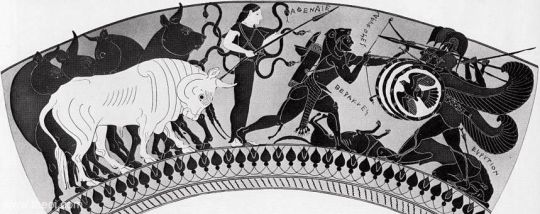
Heracles' labor aside, this golden goblet/bed made me wonder if Helios might have had different nightly vehicles in other traditions, and the one thing that sprung to mind first is the dragon chariot which Helios had gifted to his granddaughter Medea:

The dragon and the serpent being commonly associated with Chthonic deities, it made me wonder whether some ancient Hellenes might have had a tradition where Helios, rather than circumnavigating the world through Oceanos, he instead traveled astride the dragon chariot through Hades much like Ra does to reach the east.
As interesting as this theory is though, it is far more likely, as @wendelsae pointed out to me, that the dragons which pull the chariot are instead related to the dragon in the far east which guarded the golden fleece and the dragon Ladon to the far west which guarded the golden apples, their connection to Helios being the location of far east and west rather than anything else.
And if so, even if they have no chthonic connotations, it is not unlikely for the dragons to be related to Helios' nightly aspect.
10 notes
·
View notes
Note
Can you give some background on thekroel region/ is it just smt that exists in your imagination or are you working into a rom hack/smt else entirely? I love the designs and I'd be so curious to see more
I do plan to eventually make something with it, either a game or at least a comic or stories, but right now I'm just working on the Pokémon. But I do have some basic info
General Kroel information so Far
The Kroel Region is a vast continental mass big enough to hold multiple regions, but there are only two main ones at the time the story unfolds.
Kroel is a very old region, due to long history and size many civilizations and cultures have developed on it, it is known for its many traditions and legends, but in recent years there has been a great economic and technological development just in the heart of the continent, a large group of cities have united into forming a small country of their own, named Neo-Kroel, which aim to steer the old continent into the future.
This is the main reason for your character to come to Neo-Kroel, you are a trainer and you family has just moved in due to you parent having a new job, and you will begin your pokemon journey as well, as soon as you get your starter you are set to beat the eight gym leaders of Neo-Kroel, this eight gyms are relatively new ones, the leaders are young and in some cases not very experienced, your gym battles with them will help you both grow as trainers, of course they will be harder as you go on until you collect the eight badges. In this part of the region you will find the spatial center on Blackfall city, the laboratories where you can revive your fossils as well as lots of labs and malls, it is a very modern region.
When you are done collecting you 8 badges you will be told that now you are ready to face a greater challenge, you are ready to take on Old Country
Old Country is the name given to the rest of the continent, it almost doubles the size of Neo-Kroel, it has many ecosystems and climates and its more traditional, with many cities and gyms reflecting different cultures. The gym leaders on Old Country are older and more experienced than the leaders in Neo-Kroel and are harder to take.
In order to travel from Neo-Kroel to Old Country you must cross a large desert known as the Eternal Sea, a large sea of dunes, you will follow a straight path as you are advised not to wander east or west, as you are not ready to visit either place until you have beaten all the gyms in Old Country. this places are The Garden of Marble to the east, a large valley full of ancient ruins, many full of ancient pokemon, and the Great Necropolis to the west, a Large tower like structure that goes both up above the ground and deep down below, many legendaries rest in this two places and will awaken once you have been able to enter this places.
Once you have beaten the 16 gyms of both Neo-Kroel and Old Country you will be able to face the Elite Four of the region, which are not in the region but in one of many Islands to the east of the Mainland.
This region has its own criminal team as in other regions, Team Phobia (I kept the P) wich wants to rule over Kroel through fear, the team uses scary pokemons and its themed after old movie monsters, its boss is still based on a vampire. You will face them across both regions and will have to thwart their plans twice with two different legendaries.
115 notes
·
View notes
Text
Tales from Aurea - Session 4.5 Now Posted!
Session 4.5 - Aurea can now be read in full on Royal Road (link here). Enjoy!
Chapter Summary: After several trials and diversions, the companions reach the Imperial capital of Aurea. There, they can relax and heal under the watchful eye of the Ordo Draconis, and Sakrattars can finally visit the famed library at the Academia Arcana to search for any information on zmaj or the Irkallu.
Taglist (ask to be +/-): @drippingmoon, @kainablue, @splashinkling, @space-writes, @aroyalpaininthecass, @thelaughingstag
Curious what this story is about? Check out the WIP Introduction here
Chapter preview under the cut
“Would you accompany me to Aurea?”
It had been a week since Linnea had asked.
After leaving the burned ruins of Feriel’s and Bandrigan’s estate behind, the companions stopped back in Barsicum where Saara led them to her grandparents’ home. The elderly elven couple weakened when they heard of their daughter’s and son-in-law’s deaths, tears streaming down their faces as they welcomed their granddaughter into their home. Linnea handled the situation with a cool grace, offering pretty, rehearsed words. It was not her first time delivering the news of an agent’s death.
Separating Kaja and Saara proved to be a more difficult task. Saara wanted to come along, insisting that her knowledge of magic tech could be useful. With a few days’ time she could fashion herself a weapon and be ready to leave on an adventure. In the end, she was mollified only when Kaja promised that she would return to see her and Jo agreed that they would reevaluate their decision at this later date. Sakrattars pursed his lips, knowing that there would be no reconsidering.
It was when they left Saara and her grandparents that Linnea had asked her question: “Would you accompany me to Aurea?”
She was going to deliver her full report at the Ordo Draconis headquarters and wanted the party to come along as corroborators. They had no reason to argue: Jo, Kaja, and Sakrattars were already on their way to Aurea when they had gotten sidetracked and Leif and Amale were fully committed to joining them in light of all they had seen.
They spent the week traveling the winding roads south down through the Aurelian peninsula, passing through a number of towns along the way: Orium, Lanium, Pelagium. Linnea rented horses to ease their journey but the animals were spooked by Jo’s presence.
“What do natiuhans ride, since horses are too small?” Leif had asked casually as they waited for the stablehand to bring their mounts around.
“We have no need.” Jo flashed a loaded smile. Leif quirked an eyebrow as he waited for an explanation that never came. Sakrattars sighed and shook his head.
With Jo trailing behind on foot, while also nursing the injuries she sustained in the Fallen’s attack, the trip took longer than Linnea had hoped. It was mid-morning on the eighth day when they finally reached the outskirts of the city.
Originally a fortress during the Age of Blades, Aurea was built on an island just offshore, connected to the Aurelian mainland by a singular, wide causeway made of stones. As the city swelled in size, it outgrew its island and people started building on the peninsula proper. This area was mostly inhabited by farmers and fishermen, guardsmen who monitored traffic in and out, and merchants waiting for clearance to cross the bridge.
As they rode through the streets, Leif shielded his eyes from the sun. “Alright, who here has been to Aurea?” he asked with a grin. Jo shrugged. Kaja shook her head.
“I have, but usually by ship,” Sakrattars replied. Arvisian Bay was just a pleasant day trip across the calm waters of the gulf, the passage protected from rough ocean waves on three sides: the Aurelian peninsula in the west, Taracosia in the east, and the island of Arvis in the southeast. Conversely, the journey by land would take almost three weeks by horseback or wagon and was subject to bandit attacks and rough terrain.
The looming spires of the guard towers drew ever closer. Seagulls cried overhead, swooping down through the crowds to scatter flocks of pigeons and steal the scraps accumulated in the gutters of the cobblestone road.
“There’s a smell.” Kaja wrinkled her nose. “Like rotting fish.”
“We’re getting close to the ocean,” Sakrattars said. “It’s probably the fishing boats down at the docks.”
Kaja’s eyes lit up. “The ocean?” She brought her horse to a sudden stop in the middle of the road and leapt down from its back.
“Kaja?” Jo cried. “Where are you going?” But Kaja dashed away without explanation, leaving the companions to deal with fiery glares and angry shouting.
11 notes
·
View notes
Text
from my bookshelf
Pytheas of Massalia was a Greek geographer, explorer and astronomer from the ancient Greek colony of Massalia — modern-day Marseille, France. In the late 4th century BC, he voyaged from there to northwestern Europe, but his detailed account of it, On The Ocean, survives only in fragments, quoted — and disputed — by later authors such as Strabo, Pliny and Diodorus of Sicily. The Extraordinary Voyage Of Pytheas the Greek by the noted British historian of ancient maritime Europe, Barry Cunliffe, attempts to draw out the reality of what was an extraordinary sea journey, from the Western Mediterranean north along the Atlantic coast of Europe to the British Isles, then even further north, to the near-mythic land of Thule. Cunliffe makes a strong case for Pytheas being “the first European explorer”, while identifying the most likely locations of Thule, sought so avidly by 19th and early 20th century adventurers and artists.
James Hamilton-Paterson’s Seven-Tenths: The Sea And Its Thresholds, published in 1992, more than two thousand years after Pytheas’s On The Ocean, is an ambitious, expressive exploration of the vast aqueous wilderness that covers three-quarters of our planet by a writer of remarkable literary accomplishment (he was one of Martin Amis’s professors at Oxford). Plumbing humanity’s complex, multi-faceted relationship with the sea, Hamilton-Paterson writes vivid, meditative passages about, well, everything — fishing, piracy, oceanography, cartography, exploration, ecology, the ritual of a burials at sea, poetry, and even his own experiences living for extended periods on a small island in the Philippines.
Tom Neale’s autobiography, An Island To Oneself: Six Years On A Desert Island, describes an altogether smaller, more solitary world: the island of Anchorage, part of the Suwarrow Atoll in the South Pacific. Born in New Zealand in 1902, Neale spent most of his life in Oceania: after leaving the Royal New Zealand Navy, he worked for decades aboard inter-island trading vessels and in various temporary jobs ashore before his first glimpse of his desert island home. He moved to Anchorage in 1952 and over three different periods, lived in hermitic solitude for 16 years, with rare visits from yachtsmen, island traders, and journalists. Among the last was Noel Barber, a close friend of my late father: he gave my father a copy of Neale’s book, in Rome, shortly after it was published in 1966 (I still have it). Neale was taken off his beloved island in 1977 and died not long after of stomach cancer.
The Starship And The Canoe by Kenneth Brower, published in 1978, is an unlikely dual biography of a father and son that draws intriguing parallels between the ambitious ideas of renowned British theoretical physicist and mathematician Freeman Dyson — who, in the early 1970s explored concepts for interstellar travel, settlements on comets, and nuclear rockets that might propel mankind to the outer reaches of the universe — and his wayward son, George, who lived in a self-built tree house 30 metres up a Douglas fir overlooking the Strait Of Georgia, in British Columbia and devised large canoes based on Aleut baidarkas in which to paddle north to the wild, uninhabited littoral of southern Alaska. Brower’s descriptions of long passages with the younger Dyson in the cold, sometimes fierce tidal waters between Vancouver Island and the Canadian mainland are gripping and I have read them again and again. It is, unarguably, my favourite book.
The late, New Zealand-born doctor and sailor, David Lewis, is not as widely known as he was half a century ago, even by avid readers of sea stories, but from his earliest memoirs in the 1960s — of his participation in the first-ever singlehanded trans-Atlantic race (The Ship That would Not Sail Due West), and of incident-prone voyages to far-flung coasts with his young family (Dreamers of the Day, Daughters of the Wind, and Children Of Three Oceans) — to his practical, first-hand studies of instrument-less ocean navigation among South Pacific islanders, (We, The Navigators and The Voyaging Stars) in the 1970s, Dr. Lewis was not only the late 20th century’s most remarkable and intelligent writer on the sea and small-boat voyaging but also one of its most adventurous. My favourite of his several books: Ice Bird, published in 1972, an account of a gruelling, almost fatal voyage from Sydney, Australia, in an ill-prepared, steel, 32-foot yacht to achieve the first singlehanded circumnavigation of Antarctica.
It’s said that spending time anywhere with Lorenzo Ricciardi, late ex-husband of Italian photographer Mirella Ricciardi, was an adventure. A film-maker and former senior advertising executive, once described by a British writer as “a penniless Neapolitan count”, he gambled at roulette to raise enough money to buy an Arab dhow, which, in the 1970s, with little seafaring experience and plenty of mishaps, he sailed from Dubai to the Arabian Gulf, and from there down the Arabian to coast of Africa, where the dhow was shipwrecked among the Comoros Islands. The Voyage Of The Mir El Ah is Lorenzo’s picaresque account (illustrated by Mirella’s photographs). Astoundingly, several years later, Lorenzo and Mirella Ricciardi completed an even more dangerous, 6,000-kilometre voyage across Equatorial Africa in an open boat — and another book, African Rainbow: Across Africa By Boat.
Italian madmen aside, it used to be that you could rely on surfers for poor impulse control and reckless adventures, on the water and off. Back in the late 1990s, Allan Weisbecker sold his home, loaded his dog and a quiver of surfboards onto a truck, and drove south from the Mexican border into Central America to figure out what had happened to an old surfing buddy — in between checking out a few breaks along the way. In Search Of Captain Zero: A Surfer's Road Trip Beyond The End Of The Road is a memoir of a two-year road-trip that reads like a dope-fuelled fiction but feels more real than William Finnegan’s somewhat high-brow (and more successful) Barbarian Days: A Surfing Life.
Which brings me to Dana and Ginger Lamb. In 1933, these newly-weds would certainly have been looked at askance by most of their middle-American peers when they announced that they weren’t ready yet to settle down and instead built a 16-foot hybrid canoe-sailboat and set of on what would turn out to be a 16,000-mile, three year journey down the Pacific coasts of Mexico, Guatemala, Salvador, Nicaragua and Costa Rica to the Panama Canal. Dana’s 415-page book, Enchanted Vagabonds, published in 1938, was an unexpected New York Times best-seller and today is more exciting to read than the ungainly, yawn-inducing books produced by so many, more commercially-minded, 21st century adventurers.
First published in Sirene, No. 17, Italy, 2023.
11 notes
·
View notes
Text
Journey to the West: The Demons Strike Back (2017) 西游伏妖篇




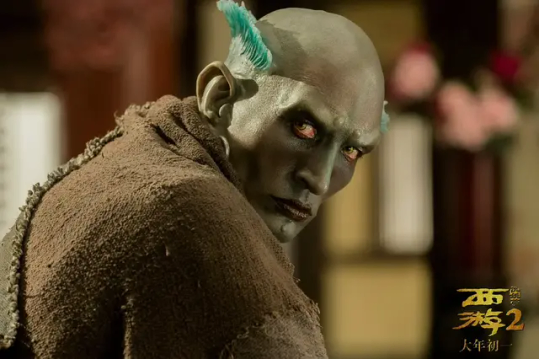
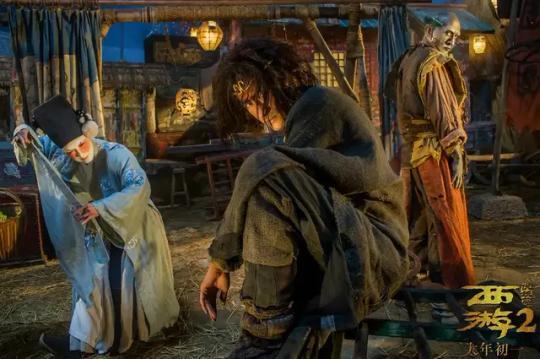



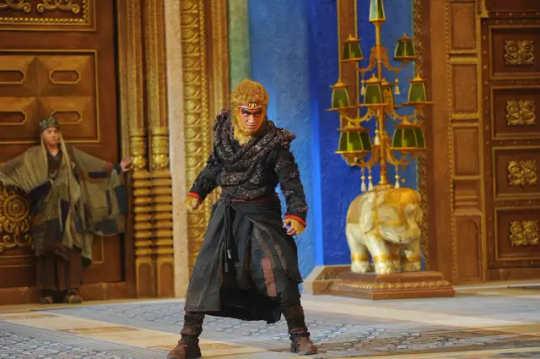
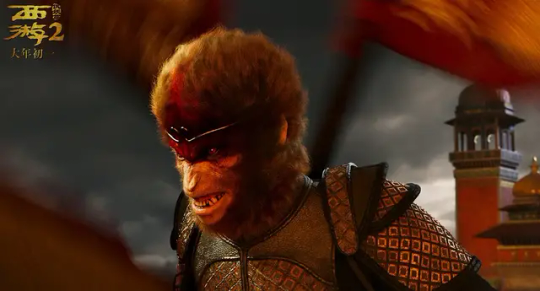
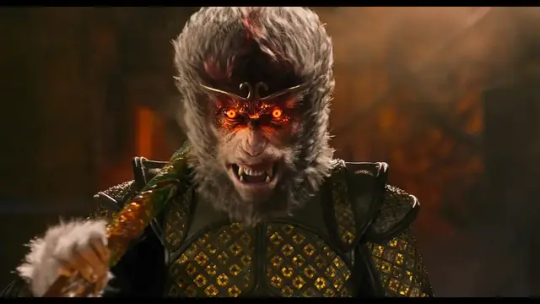
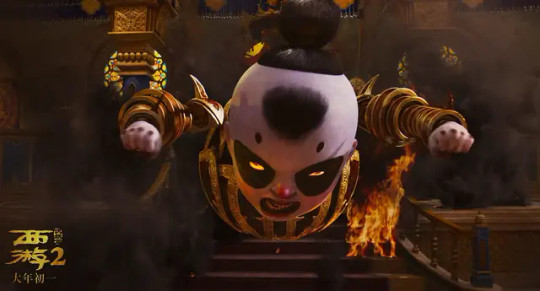
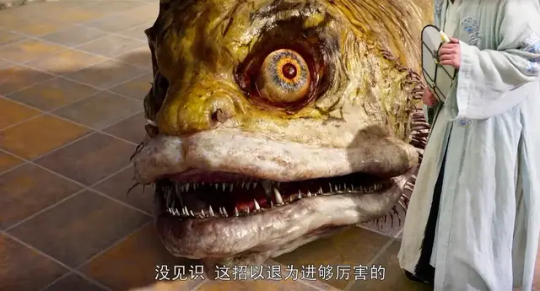
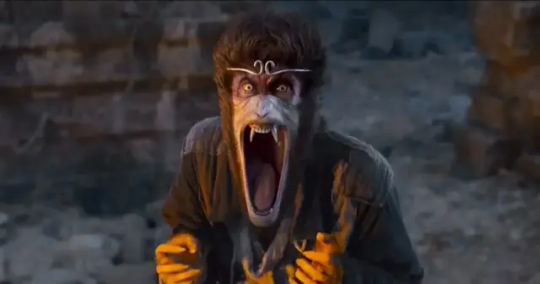


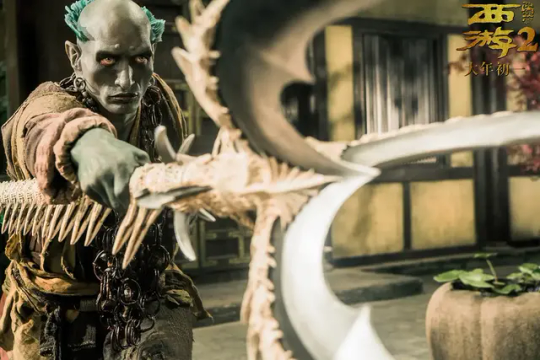

Director: Tsui Hark
Screenwriter: Stephen Chow / Li Sizhen / Tsu Hark
Starring: Wu Yifan / Lin Gengxin / Yao Chen / Lin Yun / Bao Beier / Battle / Yang Yiwei / Dapeng / Wang Likun / Wang Duo / Zhang Mei'e
Genre: Comedy / Action / Fantasy / Costume
Country/Region of Production: Mainland China / Hong Kong, China
Language: Mandarin Chinese
Date: 2017-01-28 (Mainland China)
Duration: 108 minutes
Also known as: Journey to the West: Demon Chapter 2 / Journey to the West: Demon Chapter / 伏妖篇 / 西游降魔篇2 / 西游·降魔篇2 / 西游·降魔2
IMDb: tt5273624
Type: Reimanging
Summary:
The monk Tang Sanzang finds himself as a giant in a city in India. His master congratulates him on reaching India and retrieving the Sutras, and gives him a halo as a reward. The halo, however, malfunctions and Tang awakes from his dream to find himself in an alley in a village of circus performers with his three disciples: Sun Wukong; Zhu Bajie; and Sha Wujing. Tang encourages Sun Wukong to perform for the villagers, but the disciple refuses. Angered by this stubbornness, Tang provokes Sun Wukong by calling him a "bad monkey", which causes Sun Wukong to smash the village and damage the villagers' homes in his temper. The terrified villagers present the group with money and food for their travels, but Sun Wukong continues wreaking havoc, sending Zhu Bajie and Tang flying through the air. That night, Tang whips Sun Wukong for his disobedience.
The next morning, Tang goes to find water for their breakfast congee and comes across a house. Its host, a beautiful woman in a splendid outfit, welcomes them all in for breakfast with her companions. Sun Wukong, however, sees through their disguises as spider demons; he purposely provokes them until she and the others show their true form. During the subsequent battle, the demons come together to form one huge spider. After being poisoned by the spider, Sha Wujing falls ill and slowly bloats into a fish-like creature. Sun Wukong defeats the spider and Tang attempts to exorcise her, but Sun Wukong smashes in the demon's head with one blow. Once more, Tang is annoyed at Sun Wukong's disobedience and whips him again that evening. Later that night, the enraged Sun Wukong discusses with the other disciples his plans to kill Tang, but the others fear Tang's mighty Buddha Palm powers. Tang overhears this conversation and prays to Buddha to help him and also confesses that he actually does not know, or have, Buddha Palm powers. Zhu Bajie overhears this admission and tells Sun Wukong, who challenges Tang to a fight. Just as Sun Wukong is about to strike, a blinding ray of light shines from the heavens and he retreats.
The next day, the group pass into the capital city of the Biqiu Kingdom and a minister comes out to greet them and bring them to see the king: an immature and childlike man who likes to play games. The king orders Tang to perform for him but the monk does not have anything to showcase. Sun Wukong therefore pastes an "obedience sticker" on Tang allowing Tang to copy his actions and perform stunts for the king. Sun Wukong, however, goes too far and makes Tang slap the king continuously, who throws them all out. Tang orders Sun Wukong to return and apologize, but it is revealed that Sun Wukong purposely provoked the king to make him reveal his form as the demon Red Boy. They fight and Sun Wukong defeats Red Boy, also freeing the true king of Biqiu from his cage under the throne. As a reward for helping him, the king presents them with a beautiful girl, Felicity, to accompany them on their travels. As Felicity dances for them, Tang is reminded of his deceased lover, Duan.
The group set off and on the way, Sun Wukong realizes that Felicity is actually a demon. In the meantime, Felicity takes out the nose plugs on Sha Wujing, allowing him to sneeze out the poison and turn him back into his human form. Tang, however, does not believe him, so they set off to visit Felicity's home village. Sun Wukong becomes enraged with Tang's lack of trust in him and that night he destroys the whole village, killing everyone. Tang stops him from killing Felicity, further angering Sun Wukong, who attacks Tang, but Felicity finally confesses that she is actually the demon White Bone Spirit and that the whole village was an illusion conjured by her. Sun Wukong flares up and turns into a giant Monkey King demon and swallows Tang. At that moment, the minister and Red Boy arrive and see Sun Wukong has fallen for their trick.
They had deliberately sent Felicity with the group to cause strife between Tang and Sun Wukong, so Sun Wukong would kill his master. Sun Wukong spits Tang out, however, as they had known this all the while; they only played along so that the minister would reveal her true form. They battle and the minister creates an illusion of Buddhas surrounding Sun Wukong, using them to fight him. The real Buddha, however, uses his giant palm to destroy the false Buddhas and reveals the minister's real identity as the Immortal Golden Vulture.
After the battle, Tang heads back to find a dying Felicity. He has no choice but to free her soul as there is too much demon in her. Before she dies, Felicity asks Tang if he loves her. Tang replies that he has only one person in his heart. The animosity between Tang and Sun Wukong has finally dissolved; together with Sha Wujing and Zhu Bajie, they continue their journey to the West through a desert.
In a post-credits scene, breaking of the fourth wall is invoked with the appearance of a modern movie theater, where theater employees tell both the viewer and the in-story audience that it’s time to leave and there is no post-credits scene
Source: https://en.wikipedia.org/wiki/Journey_to_the_West:_The_Demons_Strike_Back
Link: https://ww5.0123movie.net/movie/journey-to-the-west-the-demons-strike-back-19438.html?play=1
#Journey to the West: The Demons Strike Back#西游伏妖篇#Journey to the West: Demon Chapter 2#Journey to the West: Demon Chapter#伏妖篇#西游降魔篇2#西游·降魔篇2#西游·降魔2#jttw movie#movie#live action#reimaging#reimagining#alternative universe#Tang Seng#Tripitaka Monk#Monkey King#Sun Wukong#Taoist Jiu Gong#Biqiu Minister#Vulture#Zhu Bajie#Pigsy#Sha Wujing#White Bone Demon#Cyan Spider Demon#King of Biqiu Kingdom#Red Boy#Da Peng#jttw media
24 notes
·
View notes
Text






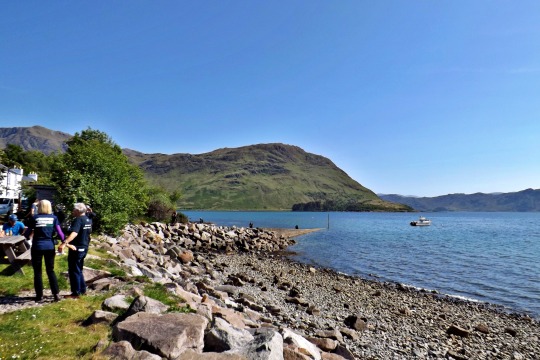








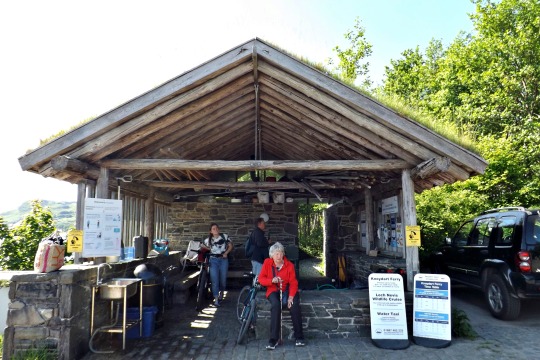




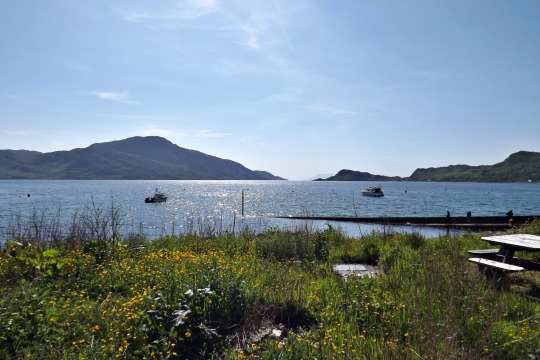



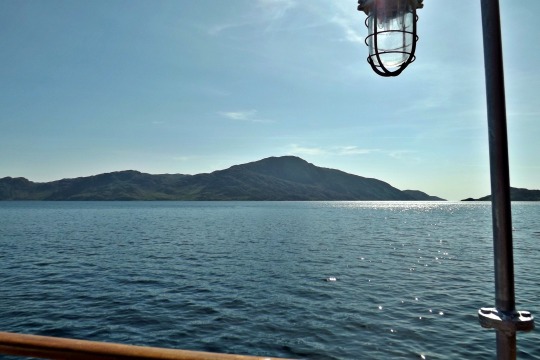


Waverley Trip - Knoydart.
The Waverley only allowed us about 30 minutes on shore here, the pub was still being refurbished, I could have bought a coffee, but by the time I stood in the cue I would be back on the pier queuing to reboard, so I just wandered around and grabbed a few pics.
Knoydart s a peninsula in the Lochaber district on the West Highlands. It comprises the Northern part of what is known as the Rough Bounds.
The principal village of the Knoydart Peninsula is Iverie Other settlements on the peninsula include Sandaig and Airor.
Other than on the Waverley, which, if you are lucky, will make one journey to the peninsula a year, access to Inverie is across Loch Nevis from Mallaig at the end of the West Highland Railway Line. and a 30-minute boat ride from Mallaig. Loch crossings are operated by two ferry services.
If you have visited and taken the alternative route, a 17 mile hike over mountainous terrain, then hats off to you.
The population currently stands at around 120 full time residents. The village provides basic amenities including a Post Office and Primary School, along with our community shop, Tearoom and the remotest pub in mainland Britain, The Old Forge which came under community ownership in 2022.
20 notes
·
View notes
Text
LoZ - Euryhaline Zora & Coastal Rito Port Town
I have an idea for a new settlement in Hyrule.
This is a result of an adventurous Zora woman falling in love with an equally adventurous Lurelin man. However, both had desperately wanted children of their own, but obviously couldn't have them. Neither were opposed to adoption, but they still want what they want. Then the little Lurelin man remembers an ancient story of the Hero of Time.
And part of that story had been about a magical mask that could turn the wearer into a Zora. The story had spoken of a distant land across the sea to the east & falling into another world.
So, while not totally believing it, they figured that the journey would be worth it at least.
Anyway, they sort of commandeer a monster pirate ship, gather a crew, & set sail to lands long forgotten.
Only to discover a new land named New Hyrule, ruled by another Hylian Royal Family, where people rode along on long, metal carriages chained together, the one at the front seeming to billow out smoke, & moved down large minecart tracks. The people also seemed able to capture images with wooden boxes that produced those images on pieces of paper almost automatically. Not even the Purah Pad could do that & while not as advanced as the Pad, it seemed that these "Pictoboxes" were low-cost enough & made of cheap enough materials that a decent number of people could own one if they wished. They didn't even seem all that complicated to make if you knew how!
It was certainly a great surprise, as these individuals claimed that their ancestors had ventured there from the Great Sea in the west to found a new kingdom inspired by the old legends of a sleeping kingdom beneath the Great Sea.
The unlikely pair informed the king of the time that there was no Great Sea in that direction, only their home country of Hyrule, which was founded 10,000 years ago, which comes as a shock.
This is how it was discovered that the legendary kingdom was, in fact, real & that King Rauru had merely refounded a new iteration of the kingdom based on what was considered a myth at the time.
Anyway, this began the process of a new & great alliance.
Turns out that the 2 Hyrule Royal Families were indeed related by blood, though so distantly that it didn't even really matter anymore.
But that wasn't what the pair had come there for. They set off to find the doorway to another world & found it they did. They fell into the terrifying world & began to search high & low for the desired mask. Which this world was filled with. In the end, they found themselves aiding a number of people before acquiring the Zora Mask as a reward.
Anyway, the unique mixing of Termina's old Sea Zora with Hyrule's new River Zora results in euryhaline Zora able to survive in both the ocean & rivers.
Their appearance ends up resembling that of the Twilight Princess Zora, though with more color variation. Their main color remains that sort of silvery-blue or faded teal shade of the old Zora, but with vivid accent colors much like the new Zora. However, they do seem to retain the new Zoran sizes.
The males tend to have the more utilitarian webbed fins of the green River Zora, while the females tend to have more betta-like fins.

A bit like this in style. Not my art. Though, with more variety of colors for the accents & following the specifics that I listed above.
These Zora later make a settlement on Eventide Island & create a new Domain called Koholint.
I'm also making Koholint a chain of islands much like Hawaii with Eventide being the smallest & closest to the mainland & their capital being on an island named Windfall. The other islands are Outset Island, Gale Island, Greatfish Island, & Dragon Roost Island. The domain is called Koholint, but the whole of the island chain are called the Koholina Archipelago. Koholina being the Lurelin word for "to choose joy."
Later, some human/Hylian Lurelin residents begin to live there, as well as a small faction of Rito that eventually adapt to the climate, becoming more water birds. They come to be known as Coastal Rito.
While the island's architecture resembles a mix of Zora's Domain, Rito Village, & Lurelin Village, with the commercial district & Rito & human/Hylian residences being on the island itself & the Zora's residences being underwater, the colors of the stonework resembles more the inside of the Face & Color Dungeons from the new Link's Awakening remake. With some definite influence from Lurelin & the Rito.

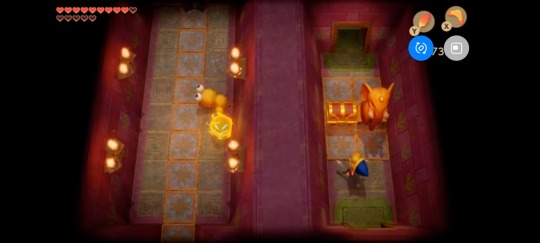


The Zora homes will mostly retain a Zora's Domain architecture, but with definite influences from Hindu & coastal Greco-Roman design aesthetics. On the other hand, the island architecture will use more wood & take on the more Maori aesthetic with coastal Hindu influence. Though, both will have definite influences from each other. (I guess what I mean when I say Hindu inflence is a look like what you see with Skyward Sword's Ancient Cistern. So, some definite Buddhist influences. At least as far as design.)
They don't really have a king, more so a Chieftain as the culture there tends to take more influence from both the Rito & Lurelin, which both tend to be more tribal.
The overall result ends up being a mix of Polynesian, southern coastal Native American, & coastal Hindu with some ancient coastal Greco-Roman influence (even Atlantis-like) for the underwater sections of the settlement. As well as in their formal fashion. Though, again, even when showcasing these Greco-Roman features, they still showcase an overall fusion of the many cultural influences as a whole.
There'd likely also be a tiny bit of Caribbean & Okinawan inspiration in there too.
They'd also have various Polynesian weapons such as the mutitude of types of Lei'o'manō (sharktooth weapons) for a Lurelin weaponry. As well as stuff like an Ulimasao (paddle-club used to end wars & usher in peace) & an Aufana (bow). Not to mention fishing & hunting spears too.
Likewise, the Coastal Rito will have invented a wooden double-limbed bow called a Pālua Lima Pana. It is a high-performance bow with a lot of power behind it & was inspired by the bow used by Karina, the Goddess of Love & Passion. Who the Faronites refer to as Kalina.
Either way, I feel like they'd eventually become a fishing & port town.
LoZ Cultural Masterlist
#loz#legend of zelda#eventide island#zora#zora culture#rito#rito culture#lurelin village#lurelin culture#koholint island#windfall island
8 notes
·
View notes
Text
ENGLISH below
Begleittext zur Installation
Niki Matita ::: Rugini
Die größte dänische Insel Bornholm liegt näher an der größten deutschen (Ostsee)Insel Rügen als an ihrer Landeshauptstadt Kopenhagen. Umgerechnet baut Dänemark 116,5kg und Deutschland 37kg Roggen pro Einwohner*in an. Damit sind die beiden Nachbarstaaten unter den fünf größten Anbauländern weltweit.
Über 1200 Jahre war Roggen synonym mit dem Korn, also dem Hauptnahrungsmittel, der Brotfrucht. Der Name der Insel Rügen (lat. Rugia) geht auf dieses Getreide zurück.
Die Rugini (auch Ranen, Rujanen, Ruani) waren ein westslawisches Volk auf den Inseln Rügen, Bornholm und dem umliegenden Festland. Der Name des Stammes bezieht sich auf den Roggenanbau, der bis heute typisch für den Baltischen Raum ist. Wenig ist von ihrer Sprache, ihrer Musik und ihren Bräuchen überliefert, doch gibt es in den folkloristischen Künsten international einige, auch erotische, Bezüge zu dieser Feldfrucht, die bis weit ins Mittelalter reichen.
Fürst Wizlaw von Rügen und seine große Liebe, Fürstin Margarete, machen eine Reise. Über einen rutschigen Steg gelangen sie auf das Schiff, ein Geistlicher hilft ihnen dabei. Das Wasser des Meeres ist kalt, tief und salzig. Die Leute tragen schon warme Mäntel, denn das Wetter ist kalt. Auch der König der Dänen und Slawen, Erik Menved, ist auf dem Schiff. Er trägt eine goldene Krone. Zwei Knappen aus der Heerschar, Satko zu Saatel und der wendische Vyriz, blasen fröhlich auf langen Fanfaren.
*Eine Ruginiliebesgeschichte, überliefert aus dem Polabischen - welches der Sprache der Rugini, dem Ranischen, ähnlich sein soll
--------------------------------------------------------------------------
ENGLISH
Liner notes to the installation
Rugini by Niki Matita
The largest Danish island Bornholm is closer to the largest German (Baltic Sea) island Rügen than it is to its capital Copenhagen. This means that Denmark grows 116.5kg and Germany 37kg of rye per inhabitant. That puts these two countries in the top five largest rye-growing countries in the world.
For over 1200 years, rye was synonymous with grain, i.e. the staple food, the breadfruit. The name of the island of Rügen (lat. Rugia) goes back to this grain.
The Rugini (also Ranen, Rujanen, Ruani) were a West Slavic people on the islands of Rügen, Bornholm and the surrounding mainland. The tribe's name refers to the practice of growing rye, which is still typical of the Baltic region today. Little has survived of their language, their music and their customs, but there are some references to this crop, including erotic ones, in the folkloric arts around the world, which date back well into the Middle Ages.
Prince Wizlaw of Rügen and his great love, Princess Margarete, go on a journey. They get onto the ship via a slippery footbridge, helped by a clergyman. The sea water is cold, deep and salty. The people are already wearing warm coats because the weather is cold. The King of the Danes and Slavs, Erik Menved, is also on the ship. He is wearing a golden crown. Two squires from the army, Satko zu Saatel and the Wendish Vyriz, are happily blowing long fanfares.
A story about Rugini lovers, passed on in Polabian - which is said to be similar to the language of the Rugini, Rani
#rügen#bornholm#ranen#rugini#sound art#radio art#installation#insel#nikimatita#minimatika#berlin#kleingartenanlage bornholm i#Korobeiniki#Robert Burns#Secale cereale#Roggen#rye#love#liebe#Nikolai Alexejewitsch Nekrassow
2 notes
·
View notes
Text
South Korea Is A Test Case On How To Fight An Ecological Disaster
After Two-thirds of the Country’s Tidal Flats Were Lost to Shoreline Development, South Korean Scientists Set Out to Prove Why This Ecosystem is so Essential.
— By Anna Jeanine Kim | Photographs: By Youngrea Kim | August 15, 2023

The sun sets over a tidal flat in Southwestern South Korea. Tidal Flats are a type of Ecosystem that Provide Habitat for Wildlife and help fight climate change—yet many are at risk of disappearing.
Yubudo, South Korea — As Byeongwoo Lee slowly walks across a sandy tidal flat on Yubudo, a small island off the west coast of South Korea, the birding guide does so quietly.
“You can’t see the birds right now,” Lee said. “You can feel them.”
Through the scope, it was just possible to make out their blurry shapes in the dark, and to hear the gentle but powerful “whhhrrr-reet-reet-reet” of tens of thousands of birds as they fed at the shoreline and in the shallow water.
As the sun rose, the tide retreated until it revealed six miles of the muddy sea floor. Channels of water like tree branches crisscrossed mud teeming with crabs, clams, snails, and sea worms.

Top: Depending on the time of day, tidal flats are either completely submerged under water or exposed to the air. Seen here at low tide, tidal channels criss cross an exposed tidal flat neighboring a residential neighborhood in Muan, South Korea.
Bottom: During an annual ceremony that takes place on the first full moon of the Lunar New Year, Gwangho Chu bows before a ceremonial table placed on a tidal flat in Wando, a small island in South Korea. Coastal communities in the Yellow Sea region have continued to honor the centuries-old tradition of celebrating the ancestral spirits of the sea and praying for a good harvest from the tidal flats.
Tidal flats like these are a type of wetland found on coastlines around the world. Korea’s Yellow Sea tidal flats, like those found on Yubudo Island, form the heart of an 18,000-mile route traveled by 50 million shorebirds as they migrate from eastern Russia and Alaska in the summer to Australia and New Zealand in the winter.
Many of them only stop once on their marathon journeys, and the tidal flats of South Korea provide them with essential food and shelter.
Yet despite their critical importance to the environment, many are at risk of disappearing. Some of the most important, and most endangered, are found surrounding the Yellow Sea along the shores of China and the western side of the Korean peninsula.
For decades, people have been transforming them into industrial sites and farms, squeezing them into smaller areas and pushing some species to the brink of extinction. But as science increasingly shows how wetlands like these benefit wildlife and help fight climate change, South Korean scientists and conservationists are gaining momentum in their effort to save and restore what’s left.

Top: From left, Okji Kim, Yangim Kim, and Sunim Bae work together to make gamtae-kimchi, a special type of kimchi made with sea algae instead of cabbage. With limited farmland available, coastal communities have traditionally relied on the abundance of tidal flats, developing a unique culinary culture over thousands of years.
Bottom: A seafood meal is served at a restaurant in Yamido, a small island now connected to the mainland by the construction of the 21-mile-long seawall built as part of the Saemangeum development project. Many of the residents living around the seawall used to make a living working in the seafood industry, but the destruction of nearby tidal flats significantly decreased their harvests, threatening their livelihood.
Why Tidal Flats Are An Environmental Powerhouse
“The tidal flats made the relationship between humans and the sea possible,” said Joon Kim, a senior researcher at the Jeonnam Research Institute who studies the culture around Korean tidal flats.
Since prehistory, South Korea’s coastal communities relied on tidal flats for harvesting clams, crabs, octopus, and seaweed, adjusting their way of life to the tide’s schedule. Their biodiversity and abundance inspired many beloved local cuisines, unique coastal culture, and a fishing economy worth over $330 million U.S. dollars a year.
These same ecosystems are now helping fight climate change.
South Korean universities are partnering with the government to study tidal flats and their ability to clean polluted water, protect shoreline communities from storms, and mitigate climate change by absorbing carbon dioxide.
Korean tidal flats are full of tiny one-celled organisms called benthic diatoms that sink through the mud as they complete their life cycle, burying carbon dioxide in the deep sediment, says Jong Seong Khim, a marine scientist and professor at Seoul National University.

Top: Seoul National University researcher Inok Lee hands a sediment sample to her colleague outside the Saemangeum seawall. Scientists like Lee are studying how the large-scale development project is harming water quality and marine wildlife.
Bottom: People ride recreational boats through a man-made canal at a city park in Songdo, South Korea. Once a thriving tidal flat ecosystem, Songdo was built on reclaimed land and hailed for creating "a city out of nothing." Over the past 70 years, South Korea has lost over two-thirds of its tidal flats due to reclamation projects like these.
The diversity and number of benthic diatoms make South Korean tidal flats unique, as does its thick mud—over 80 feet deep in some tidal flats.
In 2021, Khim and his fellow researchers published a study showing South Korea’s tidal flats and salt marshes absorb 260,000 tons of carbon dioxide annually, equivalent to taking about 110,000 cars off the road every year.
The same year, the South Korean government announced a four-year project to bring back tidal flats and salt marshes to help fight climate change.
Kim hopes that by showing how effectively tidal flats store carbon, governments and conservation groups will recognize them as valuable and save them from being destroyed.
Why Tidal Flats Are In Danger
In the past 70 years, South Korea has transformed from a country devastated by war into a highly developed, industrial nation. During this rapid change, two-thirds of its tidal flats subsequently disappeared.
In a country surrounded by the ocean on three sides, like South Korea, engineering solid, dry land over water-logged terrain, a process referred to as land reclamation, can expand territory or create more farmland.
Of all the threats to tidal flats—such as sea level rise and pollution—land reclamation has led to the most loss.
Scientists are only beginning to understand the true extent of this loss globally, but one recent study suggests 16 percent of the world’s tidal flats have disappeared in the past few decades.
“We are at a point where we should consider what we can do to give back to tidal flats,” said Kim.

Left: In 1989, a satellite image shows what the tidal flats around the Saemangeum development project looked like before construction began in earnest.
Right: By 2018, a satellite image of that same tidal flat reveals the effect of a 21-mile seawall and construction. The 100,000-acre reclamation project is seven times the size of Manhattan. ESA/NASA/USGS
One of the most controversial shoreline developments is Saemangeum, a 100,000-acre reclamation project seven times the size of Manhattan.
Developers first envisioned Saemangeum as a vast agricultural area for rice cultivation, then as the economy changed, they promised to turn it into an industrial corridor.
In 2006, despite lawsuits and protests, a 21-mile-long wall in Saemangeum deprived the ecosystem of the water it needed to exist. Just one part of the region’s transformation, it set the Guinness World Record for the world’s longest sea dam.
Millions of shellfish died when the wall severed the ecosystem from the tide.
Finding no food and no place to land, tens of thousands of migratory birds disappeared. About 90,000 now-endangered great knot birds died, driving their total population numbers down by at least 24 percent.

Top: The 21-mile-long Saemangeum seawall is is the longest such structure in the world. After its construction, tens of thousands of shorebirds disappeared from the area that used to be one of the most important habitats along the Yellow Sea region.
Bottom: As excavators work on tidal flat reclamation in Songdo, shorebirds rest during their annual migration from Australia to the Russian Far East. Developing tidal flats in this region destroys critical habitats for the 50 million migratory birds that fly this route every year.
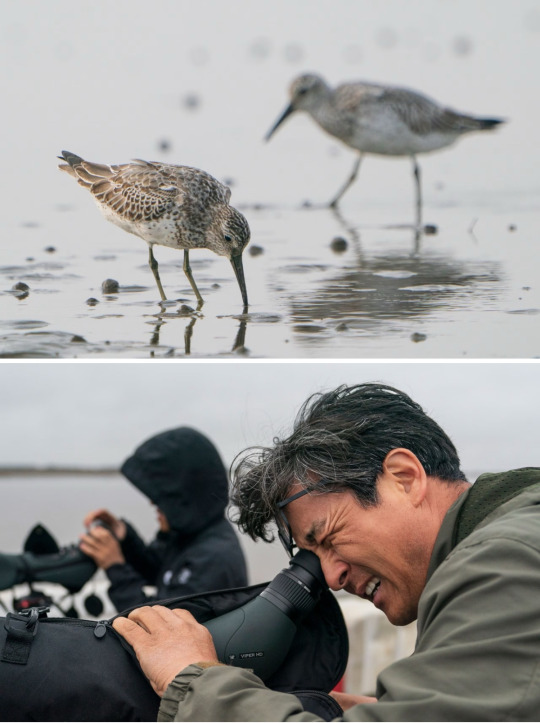
Top: Great knots feed on clams and seaworms at a tidal flat near Yubudo, a small island off the west coast of South Korea. About 80 percent of great knots have disappeared in the last two decades due to habitat loss.
Bottom: Dongpil Oh and his son, Seungjun Oh, conduct monthly surveys of shorebird populations on the the Sura tidal flat found in Gunsan, South Korea. Sura is one of the last remaining tidal flats found within the Saemangeum reclamation site. Dongpil and Seungjun are part of the Saemangeum Citizen Ecology Investigation Team, a grassroots organization that advocates for conservation and documents threats to tidal flats impacted by the Saemanguem.
It wasn’t only wildlife that suffered. Before the wall, the area was known for the nation’s best clams, with a fishing industry supporting around 20,000 people. Nearly all of that disappeared.
And yet despite promises of jobs made to the community, developers have completed less than half of the reclamation, and much of what has been reclaimed are undeveloped empty lots.
Saemangeum developers now plan to build an airport over the last remaining tidal flat, Sura, with construction scheduled to begin in 2024. Activists are suing to stop it, pointing out that the site still provides habitat for endangered species like black-faced spoonbills and Far Eastern curlews.
“It’s painful to remember how much it’s changed. Sometimes you forget how beautiful it was in the past because your eyes adjust to what it looks like now,” said Dongpil Oh, one of the activists involved and leader of the Saemangeum Citizen Ecological Investigation Team.

Left: Halophytes turn red on a tidal flat in Sinan, South Korea. South Korean researchers are studying how salt-tolerant plants like these can boost tidal flats’ ability to fight climate change by absorbing carbon.
Right: A blue-spotted mudskipper jumps during a mating dance at low tide in Sinan. Resting in its burrow at high tide and feeding in the mud when the tide goes out, the unusual, amphibious fish is adapted to the tidal flat’s drastic daily changes.
Bottom: The sun sets over Suncheon Bay Wetland Reserve at low tide. About 16 percent of the world's tidal flats have been destroyed in just the past few decades, but science is increasingly showing how important these ecosystems are for preserving wildlife and fighting climate change.


Top: National Institute of Ecology researchers and local volunteers tag baby black-faced spoonbills with GPS trackers in Incheon, South Korea. Around 90 percent of these endangered shorebirds breed on the country’s west coast. After their worldwide population dropped below 300 in the late 1980s, conservation efforts have brought their numbers to around 5,200. “As a top predator in tidal flats, their health can indicate the health of the overall ecosystem,” researcher Inki Kwon said.
Bottom: Ecotourist guide Sunjeong Heo points out a flock of birds over a tidal flat at Suncheon Bay Wetland Reserve in South Korea. Drawing over six million visitors a year, the UNESCO World Heritage site is a blueprint for the country’s tidal flat conservation and ecotourism.
A New Era of Conservation
After 30 years of construction, Saemangeum has become synonymous with ecological collapse, but it also sparked an environmental movement in South Korea after people witnessed what happens when tidal flats are lost.
Two years after the Saemangeum seawall was finished, in 2008, the South Korean government banned new large-scale reclamation projects—though developments already in progress, like Saemangeum, are still permitted.
And in 2019, reclamation of tidal flats finally plateaued in South Korea, when the net gain from restoration barely surpassed the loss, according to a 2023 report from the International Union for Conservation of Nature.
One of the best places to see the benefit of this kind of conservation is South Korea’s Suncheon Bay Wetland Reserve, on the peninsula's southern edge. The wetland was spared from the threat of development in the ‘90s, when residents and activists protested the government’s plan to mine the land.
Suncheon Bay became the country’s first internationally protected coastal wetland, and its tidal flats were designated a UNESCO World Heritage site in 2021, along with four other tidal flats in South Korea. Every year, over six million tourists visit the wetland and the nearby National Garden to see wildlife like hooded cranes and blue-spotted mud skippers.
With municipal and national funds, the Suncheon Bay Wetland Reserve bought nearby farmland by the coast, restoring the connection with the sea.
Their holistic approach to restoration has introduced organic rice farming to reduce pollution from runoff and educational opportunities for ecotourists, residents, and children in local schools. Suncheon’s success is a blueprint for tidal flat conservation around the world.
“Our focus is on letting the tide flow again, like it always did,” said Sunmi Hwang, a conservationist with the wetland reserve. “And then nature heals itself.”
#Environment#South Korea 🇰🇷#Ecological Disaster#Tidal Flats#Shoreline#South Korean Scientists#Ecosystem#Anna Jeanine Kim#National Geographic#Wildlife Habitat
3 notes
·
View notes